I’ve spent months testing the best mops – these are my top picks, from budget to battery-powered models
Keep your floors sparkling with the best mops to suit every floor type


As Ideal Home's resident floorcare expert, I know that finding a mop to buy isn't the problem. What's challenging is choosing the best mop for you, your floors, and your cleaning needs. After all, mops come in so many different shapes and forms.
And while you might already have the best vacuum cleaners or even the best vacuum mops to tackle your hard floors, nothing compares to the cleaning power of a good ol' fashioned mop, in my professional opinion. That's why I've spent months testing mops in my home, from spray to bucket sets and even steam models.
I've used them to tackle everyday dirt, muddy footprints, and messy spills. Then, I've compared everything, from the size and manoeuvrability of the mops to their cleaning quality, value for money, and reusability, to help you choose the best mop for you. These are my top picks.
Quick list
Short on time? This quick list is an overview of the very best mops. You'll find more information on each mop and why our testers recommend it if you keep on scrolling.
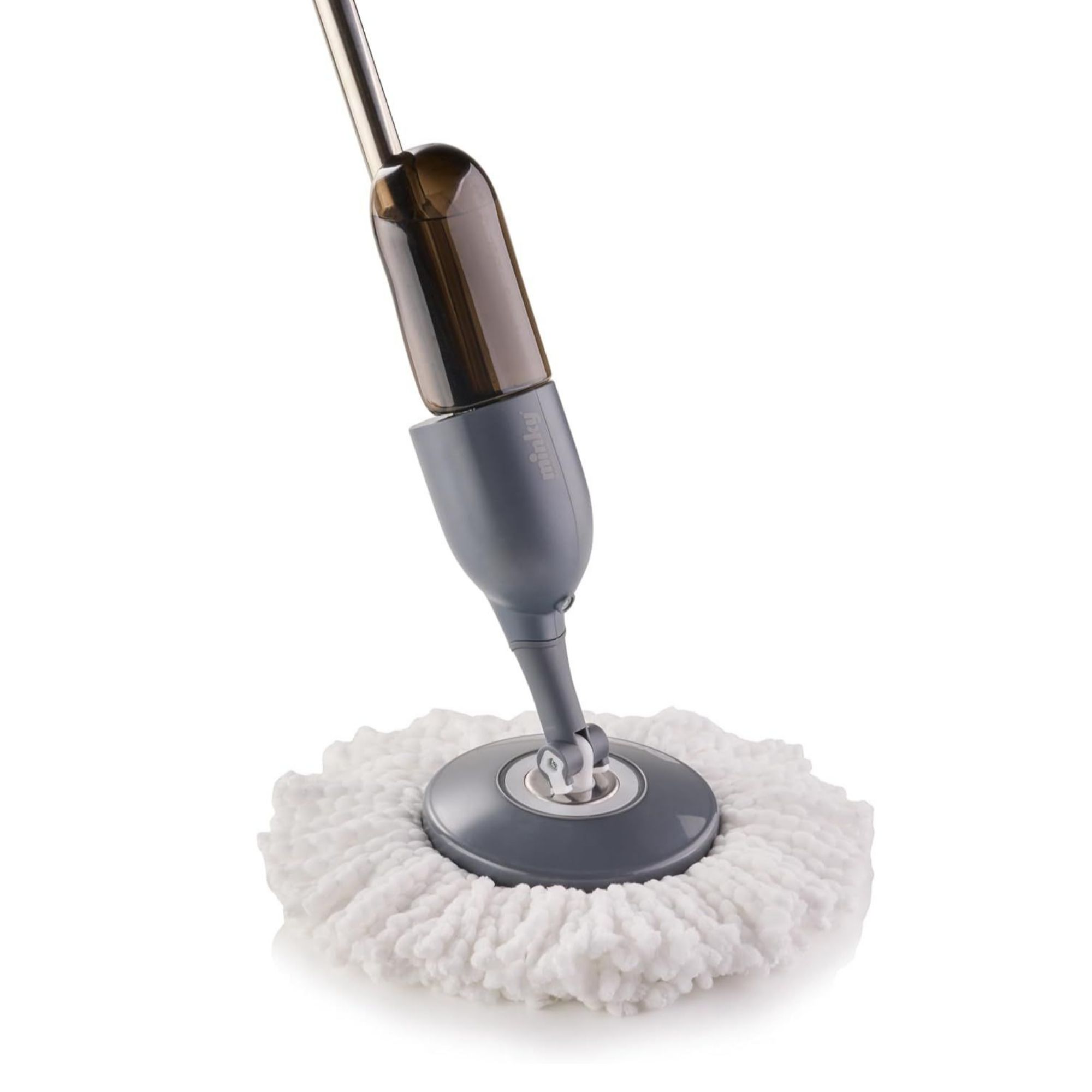
Best mop overall
Minky's latest mop is arguably their best yet. Combining the efficiency of a spray mop with the mop head you'd usually associate with mop and bucket sets, it's easy to use, easy to store, and perfect for everyday cleaning. The spinning mop head can also get into every nook and cranny, including under furniture for deeper cleans.

Best mop and bucket set
If you're looking for a mop and bucket set that will keep your floors spotlessly clean, Vileda has got you covered. Featuring innovative dual-chamber bucket technology, you can be confident that you're only cleaning your floors with clean, fresh water. The bucket also has a foot-pedal operated wringer so you can control the dampness of the mop head.
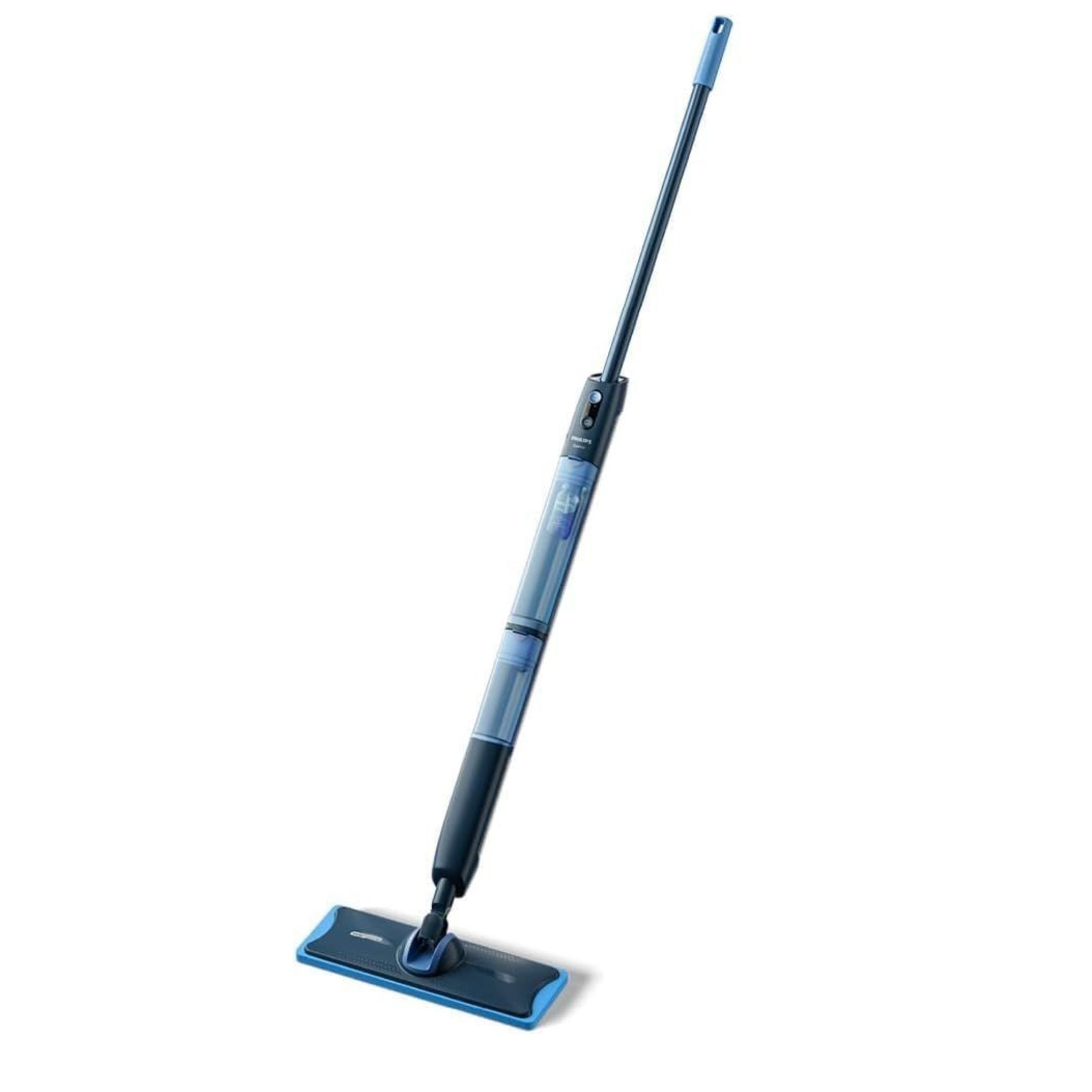
Best mop for deep cleans
This battery-powered electric mop effortlessly pumps clean water onto the floor while silently sucking up dirty water, and it even has a specialised detergent to fight bacteria and leave your floors smelling amazing. However, it's still just as lightweight and easy to store and manoeuvre as a traditional, non-electric mop.
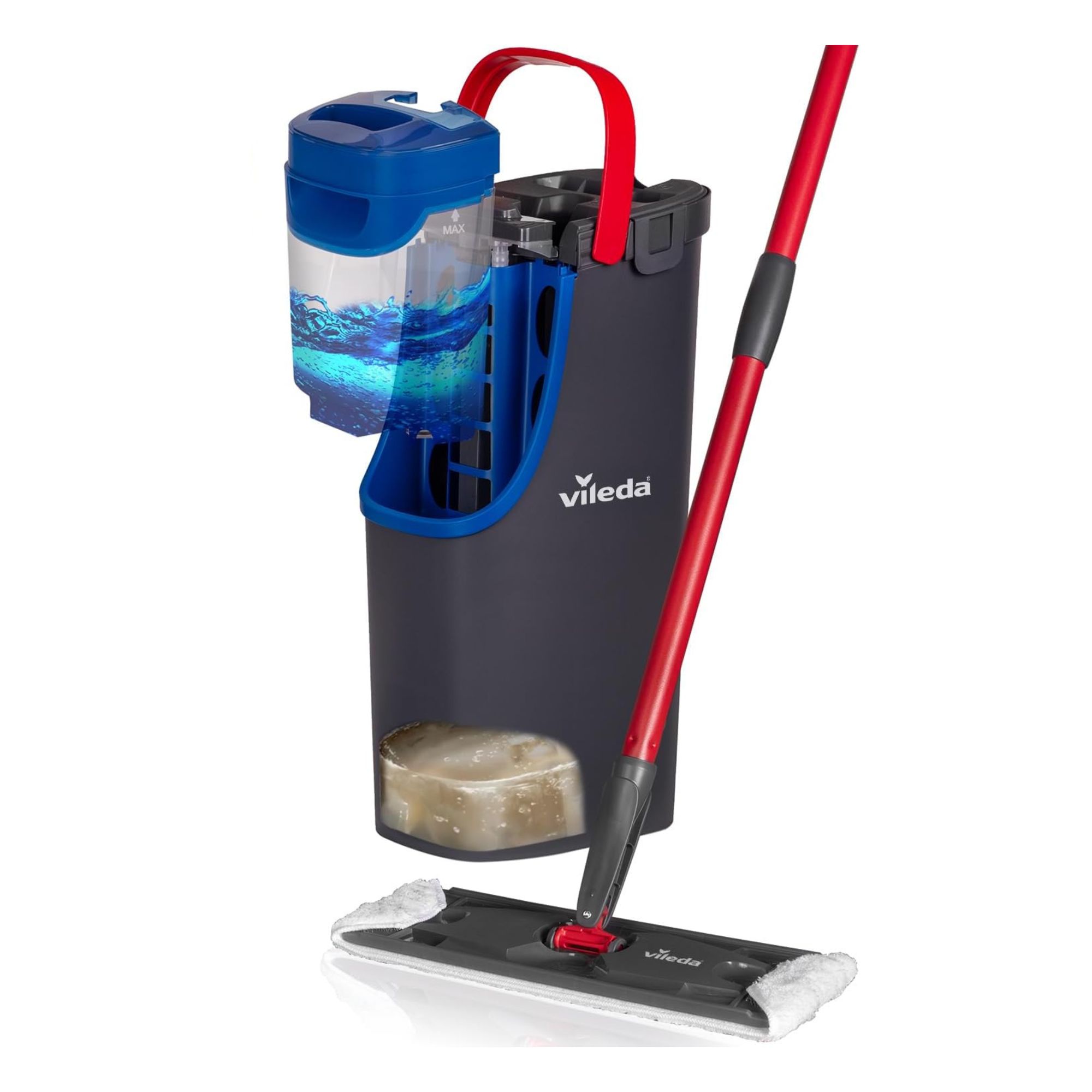
Best mop for smaller homes
Need a compact mop for a smaller home with limited storage? This new Vileda model packs a lot into a slimmer footprint, including clean and dirty water tanks and a spray mechanism that allows you to clean up to 60m² of flooring. The microfibre mop head is also machine washable and perfect for all floor types.
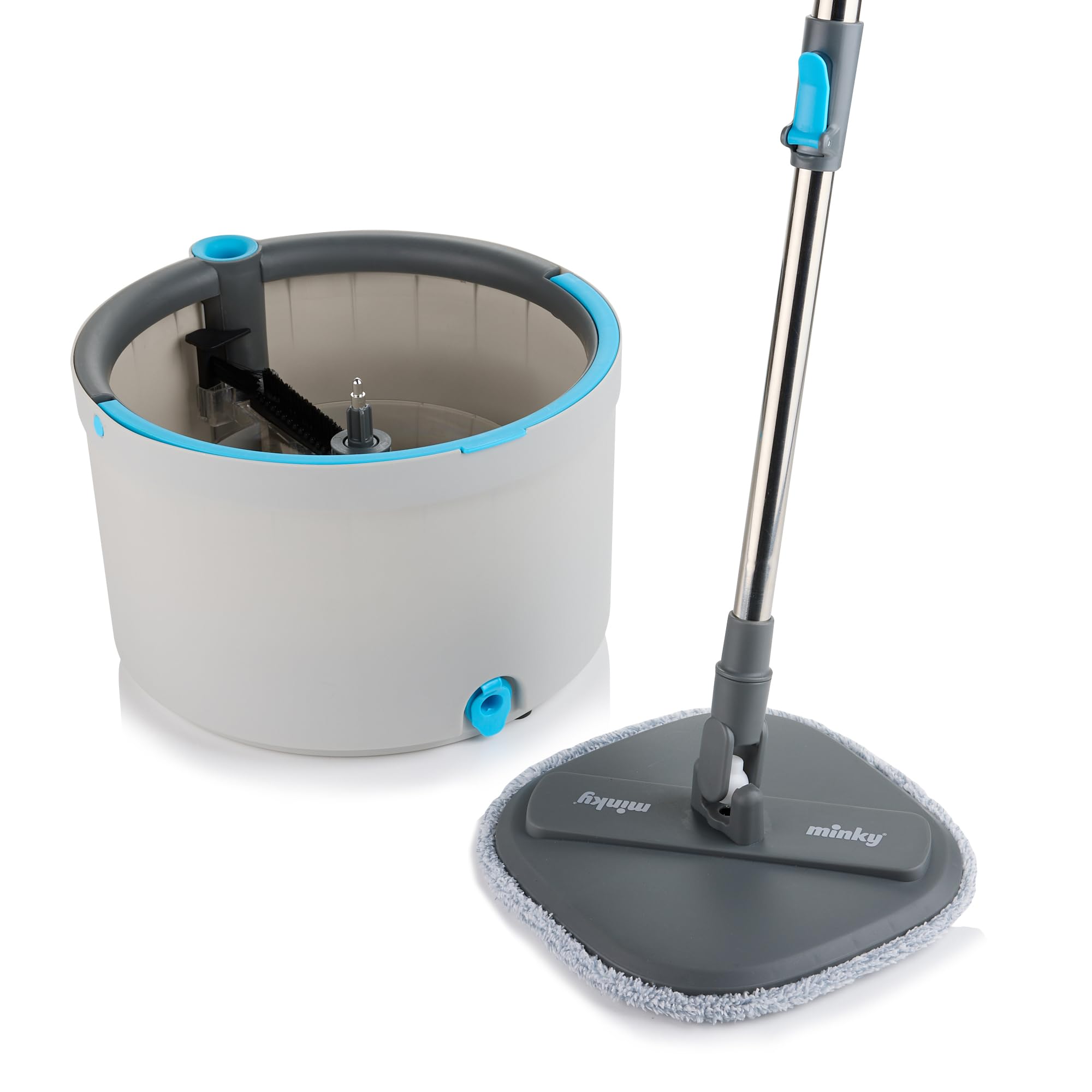
Best microfibre mop
With both a clean and dirty water section, this microfibre spin mop and bucket set ensures you only use clean water to mop your floors. The scrubbing bristles in the bucket work hard to remove dirt from the microfibre as you spin, and it's then incredibly easy to drain the dirty water when you're done.

Best mop for hardwood floors
While a traditional mop and bucket might be unsuitable for hardwood floors, this Bona mop is designed to easily tackle these areas. Coming with a sizable 500ml cleaner in a refillable cartridge, this spray mop will help you freshen up your hardwood floors quickly and painlessly.
Load the next 3 products ↓
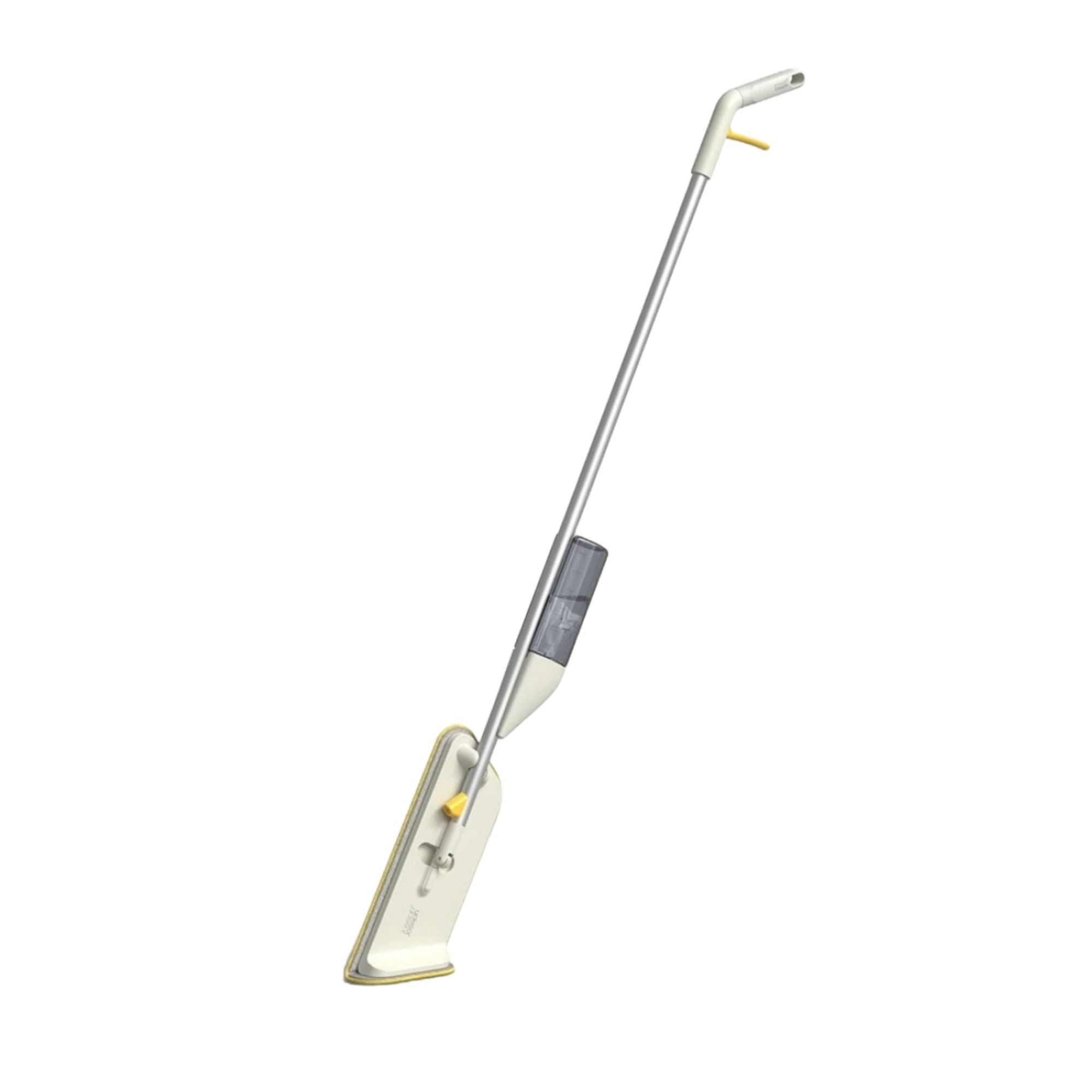
Best for stubborn dirt
With a removable microfibre mop head and easy-pull trigger spray, this spray mop is ideal for everyday cleaning. But it's the spot-cleaning scrubber pad that really sets it apart, as it's perfect for stubborn stains and dirt. It also comes with a handy wall-mounted storage bracket to suit smaller spaces.

Best smart mop
This 2-in-1 product will mop your floors while also sucking up any larger debris, which means it can tackle everything from sticky messes to rogue bowls of cereal. The smart functionalities also take the hassle away from mopping, as the iLoop Smart Sensor Technology automatically adjusts suction, water flow, and brush roller speed to your home.
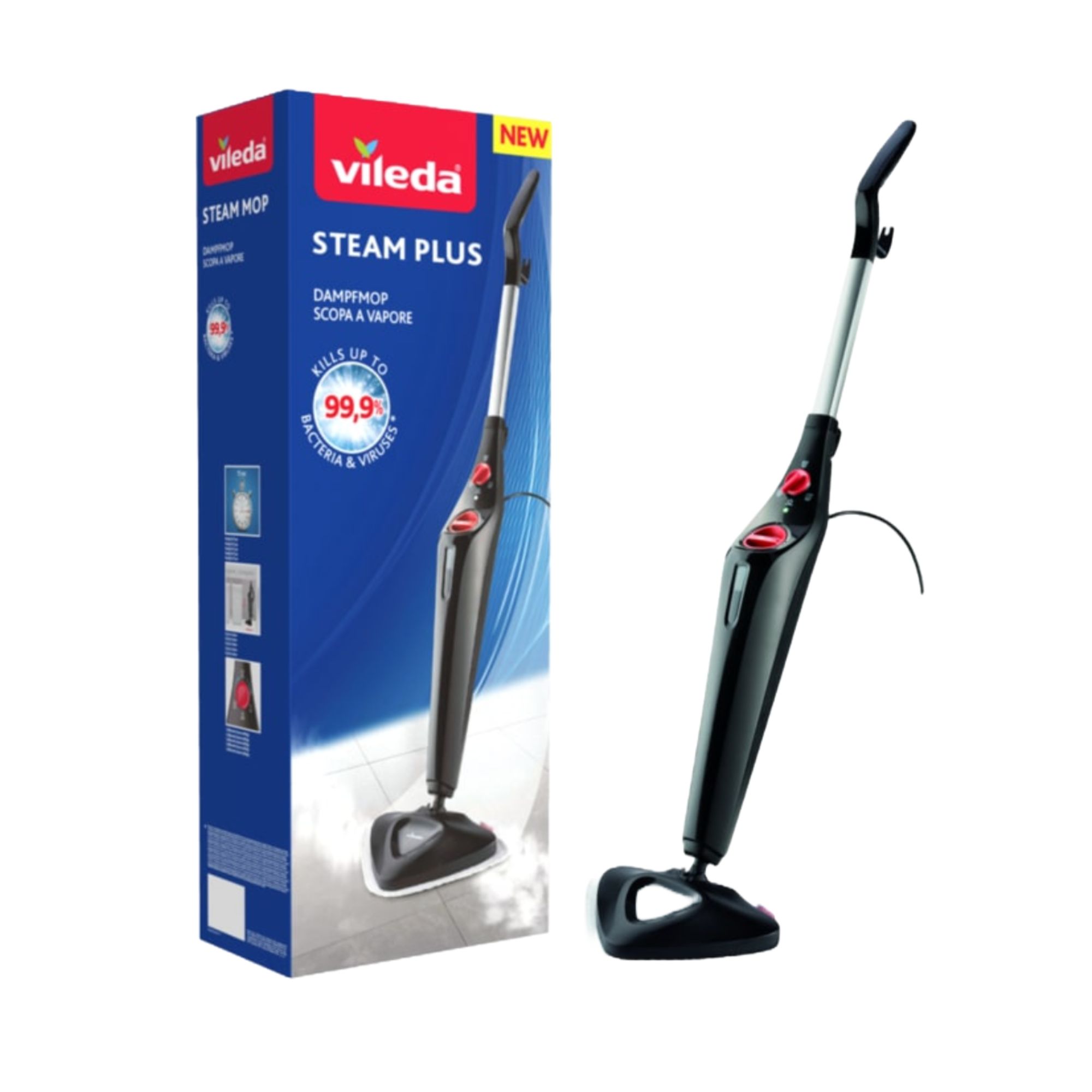
Best steam mop
If you want to pack more of a punch into your mopping sessions, this steam mop offers three steam settings to suit different floor types and offers an impressively fast heat-up time. It also comes with a carpet glider, so you can steam clean your carpets and your hard floors in one fell swoop. Just note that it is corded, so movement is a bit limited.
Best mop overall


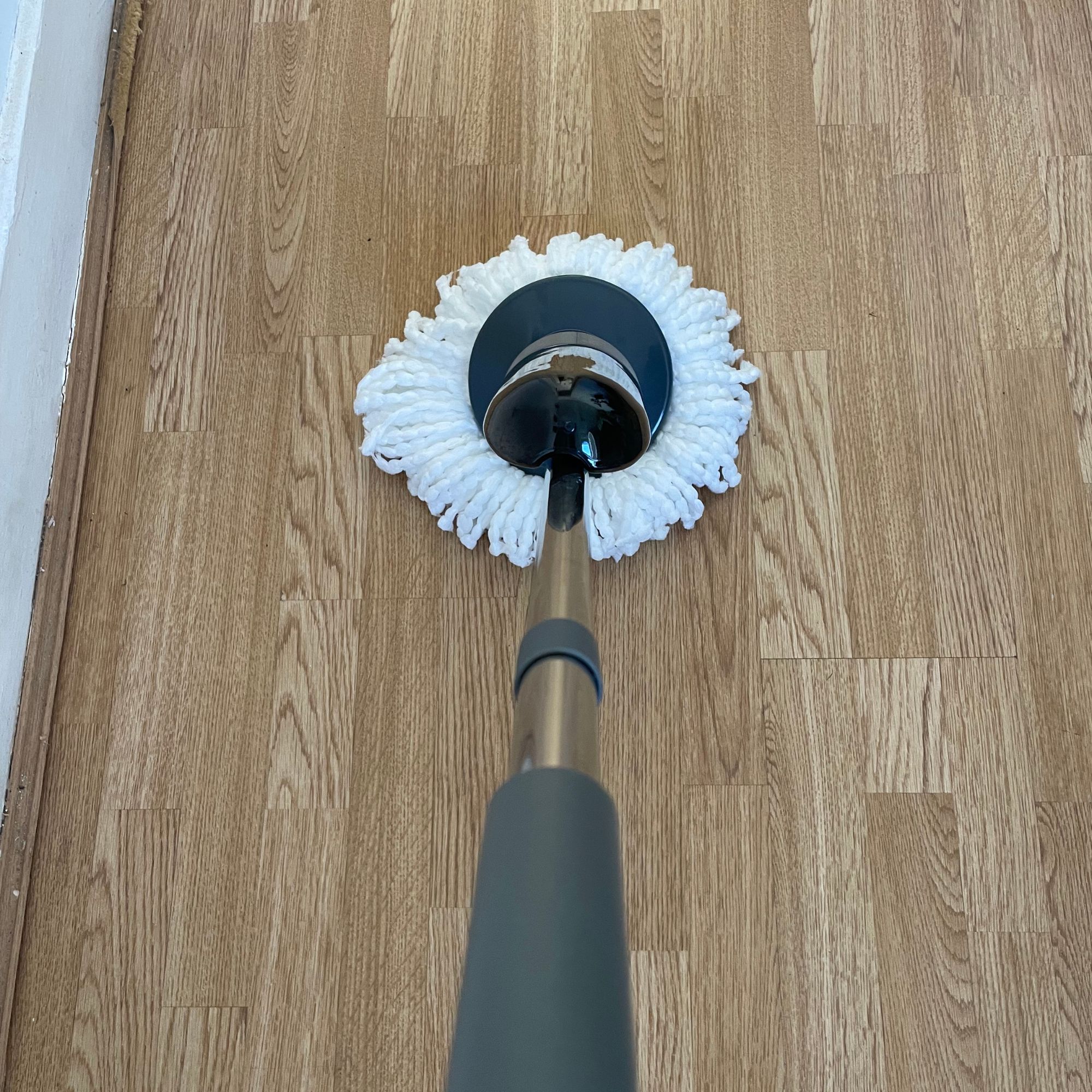

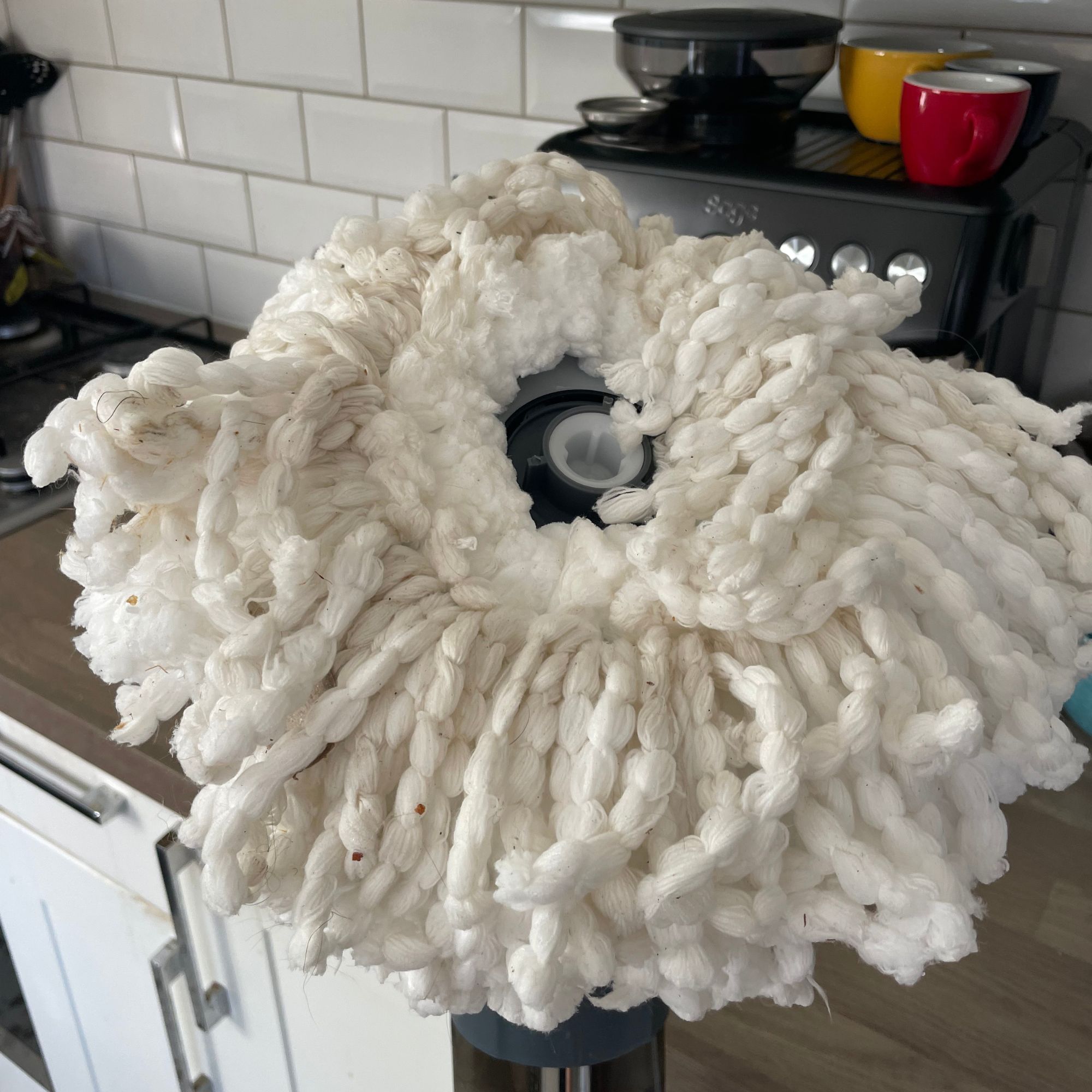
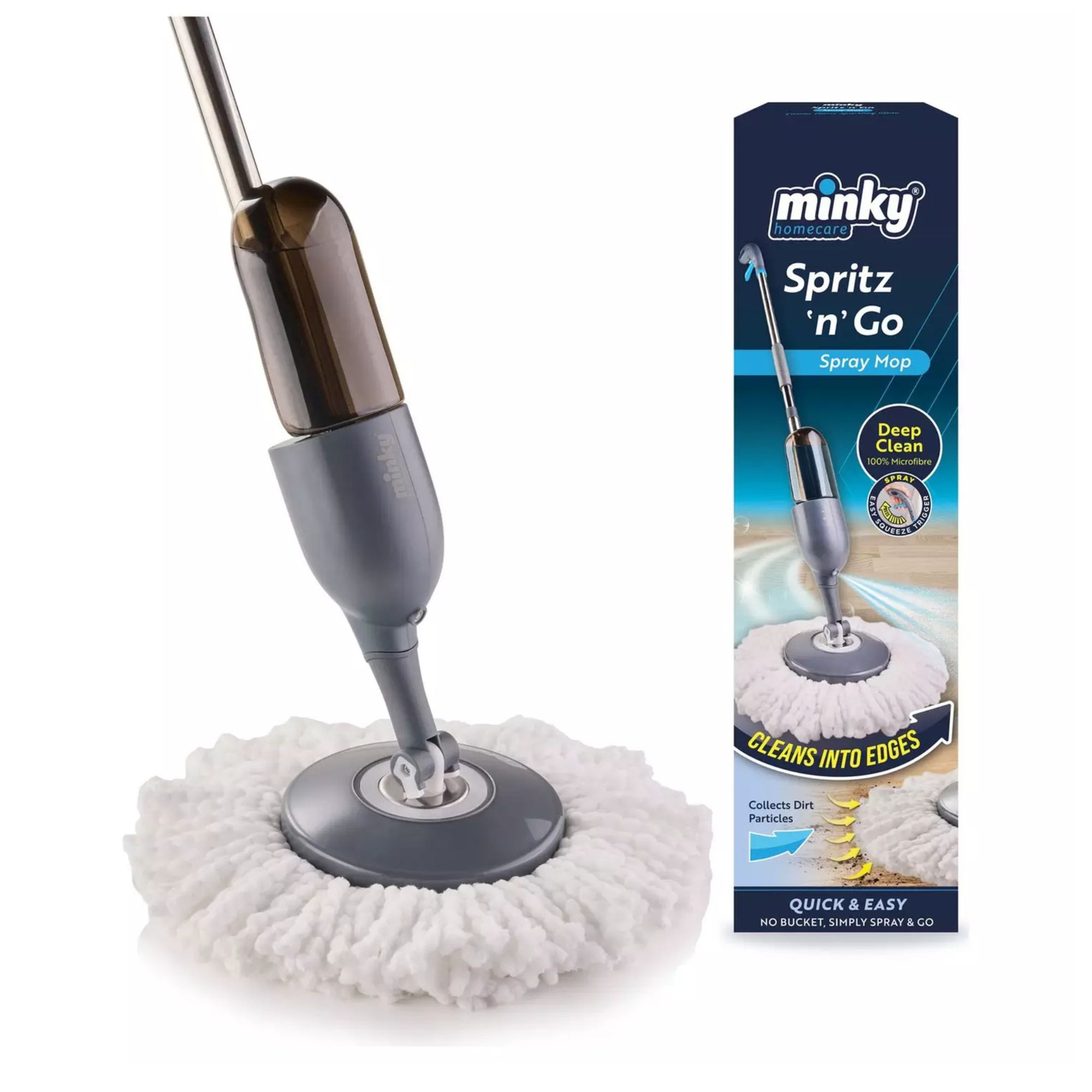
1. Minky Spritz & Spin Spray Mop
Our expert review:
Specifications
Reasons to buy
Reasons to avoid
No bucket is required for this spray mop, allowing you to fill up the bottle and spritz however much you need on your floors with the easy squeeze trigger spray. The mop head then rotates while you're cleaning to ensure skirting boards and corners aren't missed during the process.
And while the long strands of this mop head may remind you of old-school mops from the past, Minky has brought them back with their new mop to prove that these long strands can reach areas of the home you wouldn't normally mop.
Features we loved during testing
Although I tested a lot of different mops at the same time, the Minky Spritz & Spin Spray Mop is the one I kept coming back to time and time again for everyday cleaning. It was incredibly quick and easy to use, and the long microfibre strands were able to get into every nook and cranny in my house - even right into the corners.
Most notably, the mop head did get incredibly dirty during cleaning. And while I did immediately think this was a negative, it was soon clear to see that this was actually a positive as it meant that it was picking up the dirt that a lot of the other mops hadn't.
I also liked that I could either add water alone to the spray bottle or add some cleaning solution, and the spinning mop head meant that every inch of my hard flooring was cleaned - even with minimal effort on my part. A major bonus is that the mop head is machine washable, so you can just give it a wash and re-use when you need to.
Best mop and bucket set



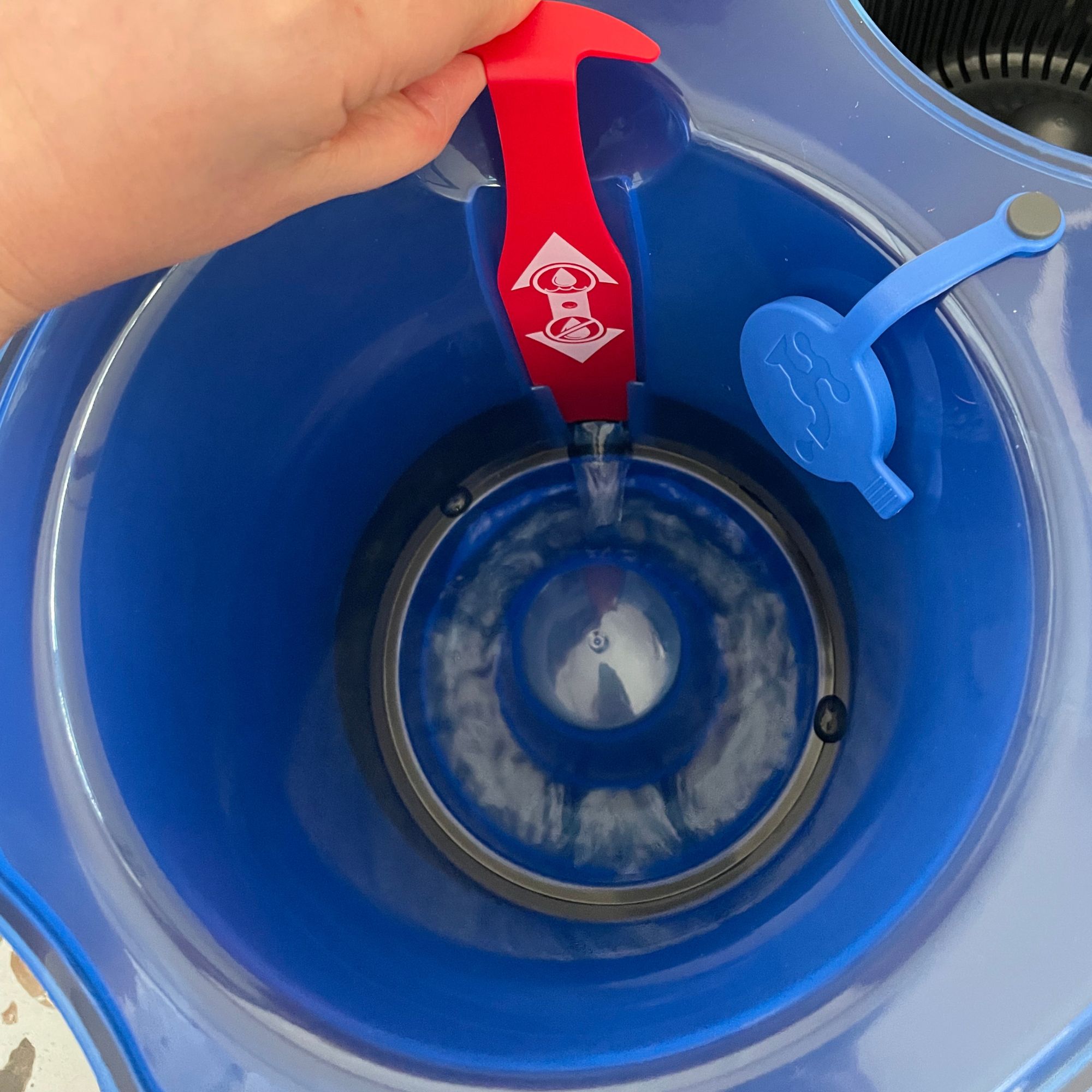
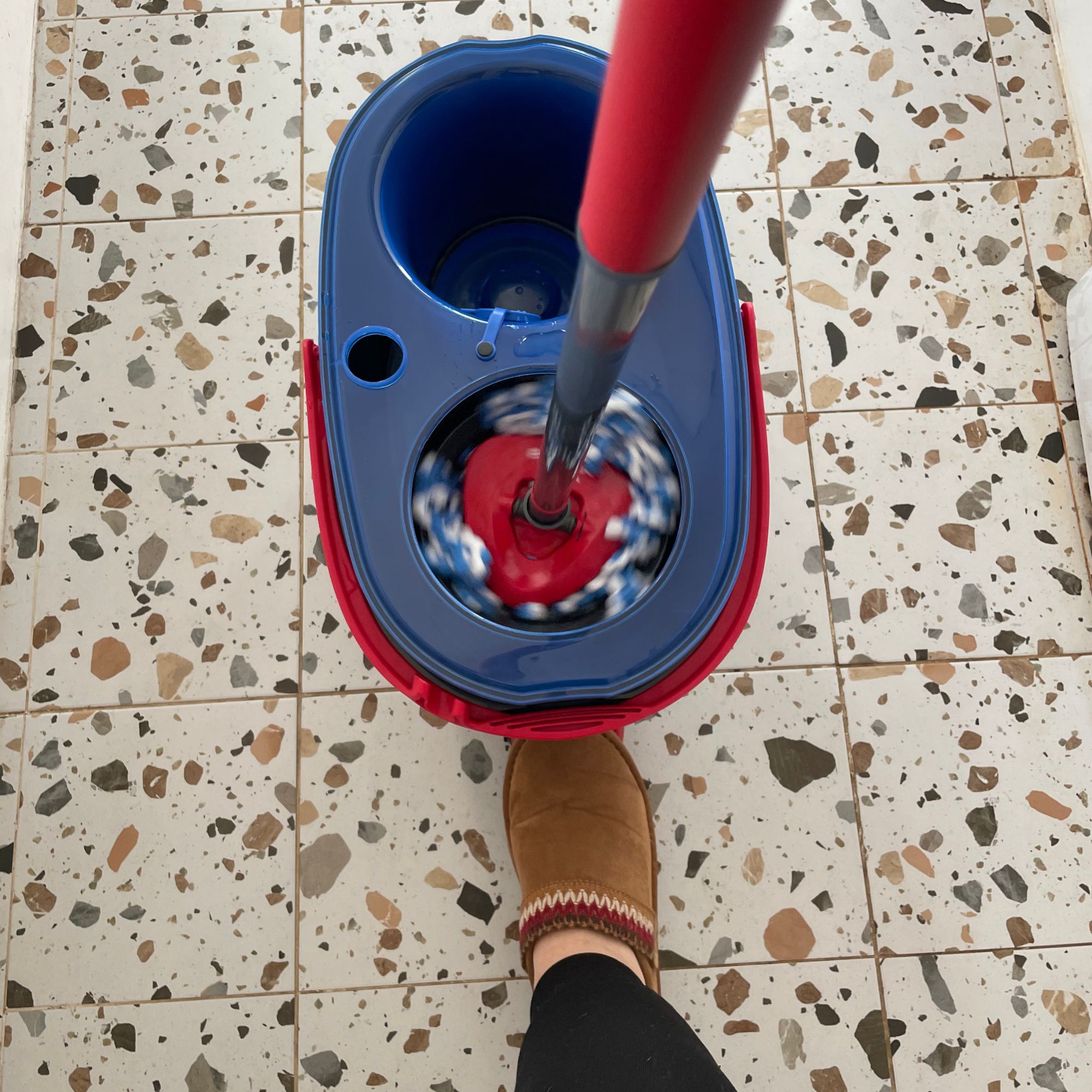
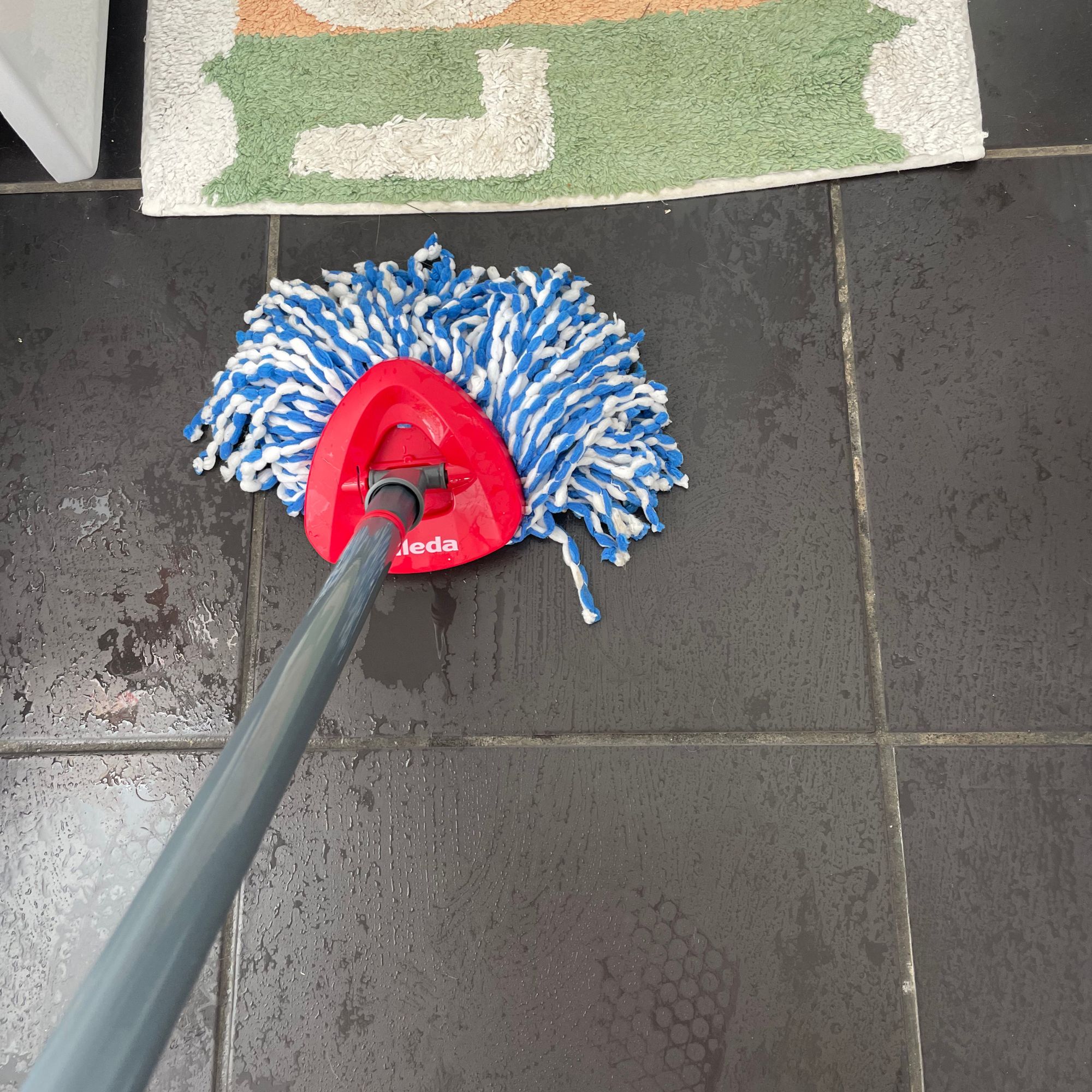
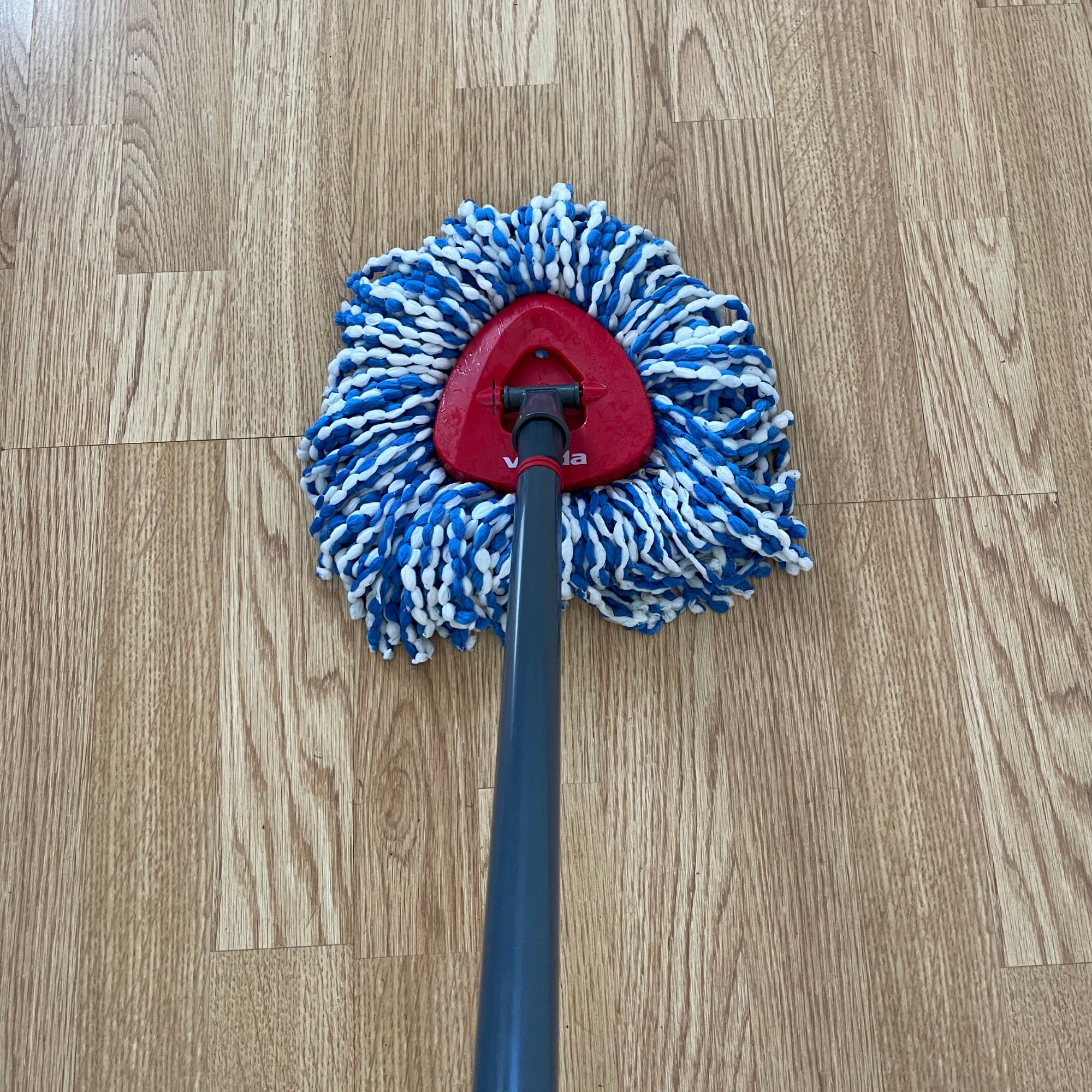


2. Vileda H2PrO Spin Mop System
Our expert review:
Specifications
Reasons to buy
Reasons to avoid
Everything about the Vileda H2PrO Spin Mop System gives you complete control over how you clean your floors, from the telescopic handle that lets you extend or shorten it to suit your height to the pedal-powered spinning bucket that allows you to dictate how damp you want the mop head.
However, the pièce de résistance of this new release is the dual-chamber bucket technology that keeps clean and dirty water completely separate. This means that you're only ever cleaning your home with clean water, and the 6L water tank means that you'll have enough to clean your whole home in one go.
Features we loved during testing
While this product may look like a traditional, old-school mop and bucket set from the outside, the reality is that it's incredibly innovative. During testing, I felt confident that I was only mopping with clean water and the mop was incredibly light and manoeuvrable. Being able to use the pedal to control how damp the mop was also a standout feature for me, as I was able to keep the mop head wetter for the tiled areas of my home but limit the amount of moisture for my laminate flooring.
It's also worth noting that the mop head is also washable. You can either machine or hand wash in warm water (up to 30°C), but Vileda suggests washing it in a laundry bag to maintain the strength of the individual fibres. My only niggle with the Vileda H2PrO Spin Mop System was that, while it does have a large water tank, the mop head is incredibly absorbent. So I found myself wasting a lot of water during the spinning process. And as someone on a water meter, I try to limit the amount of water I'm wasting.
I also can't deny that it's a lot pricier than the other mops on this list, but I do think that this is for good reason as the innovations alone warrant a higher price tag. But if you're looking for a cheaper Vileda mop, I'd suggest opting for the slightly cheaper (and older) Vileda Easy Wring and Clean Turbo Spin Mop and Bucket Set instead.
Best mop for deep cleans

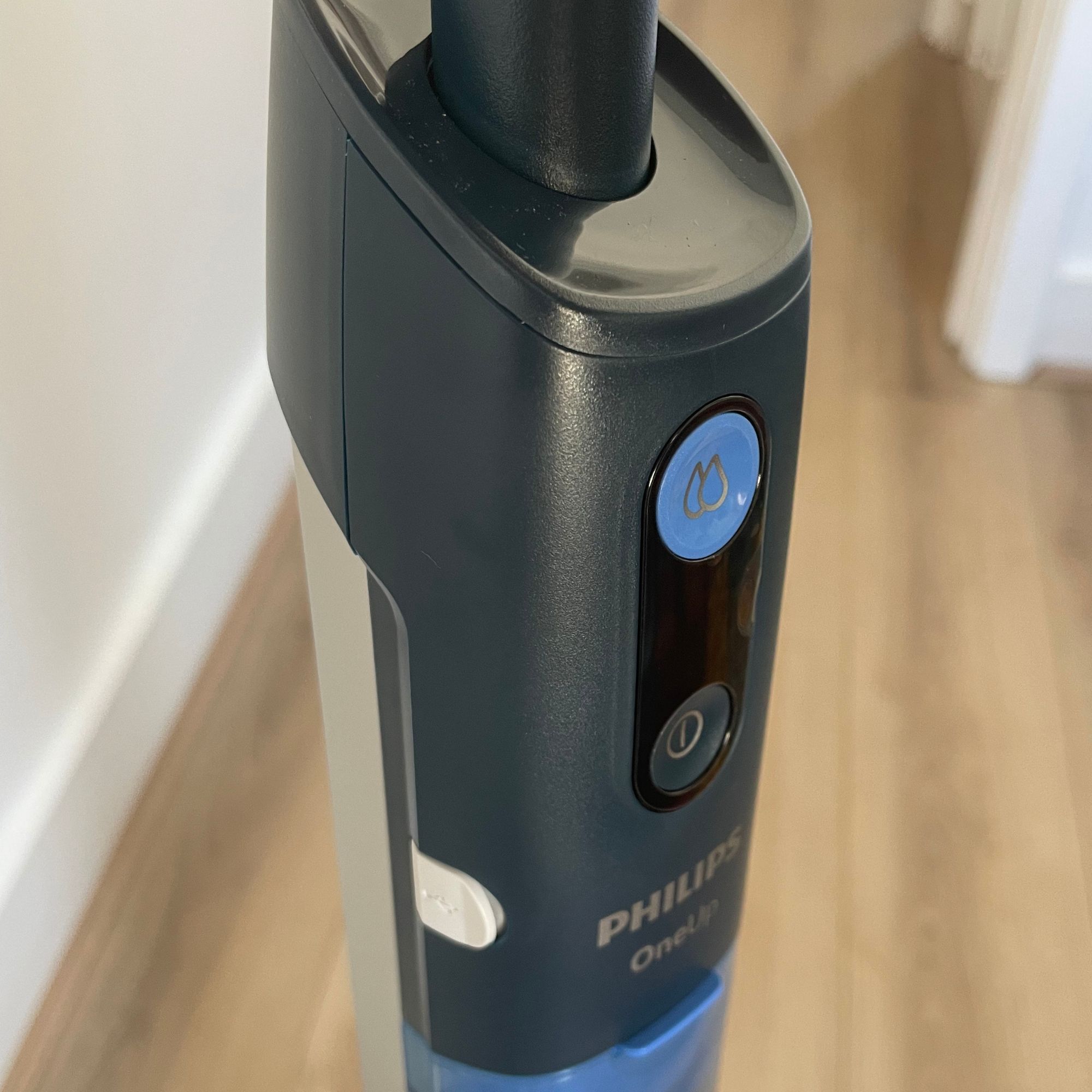

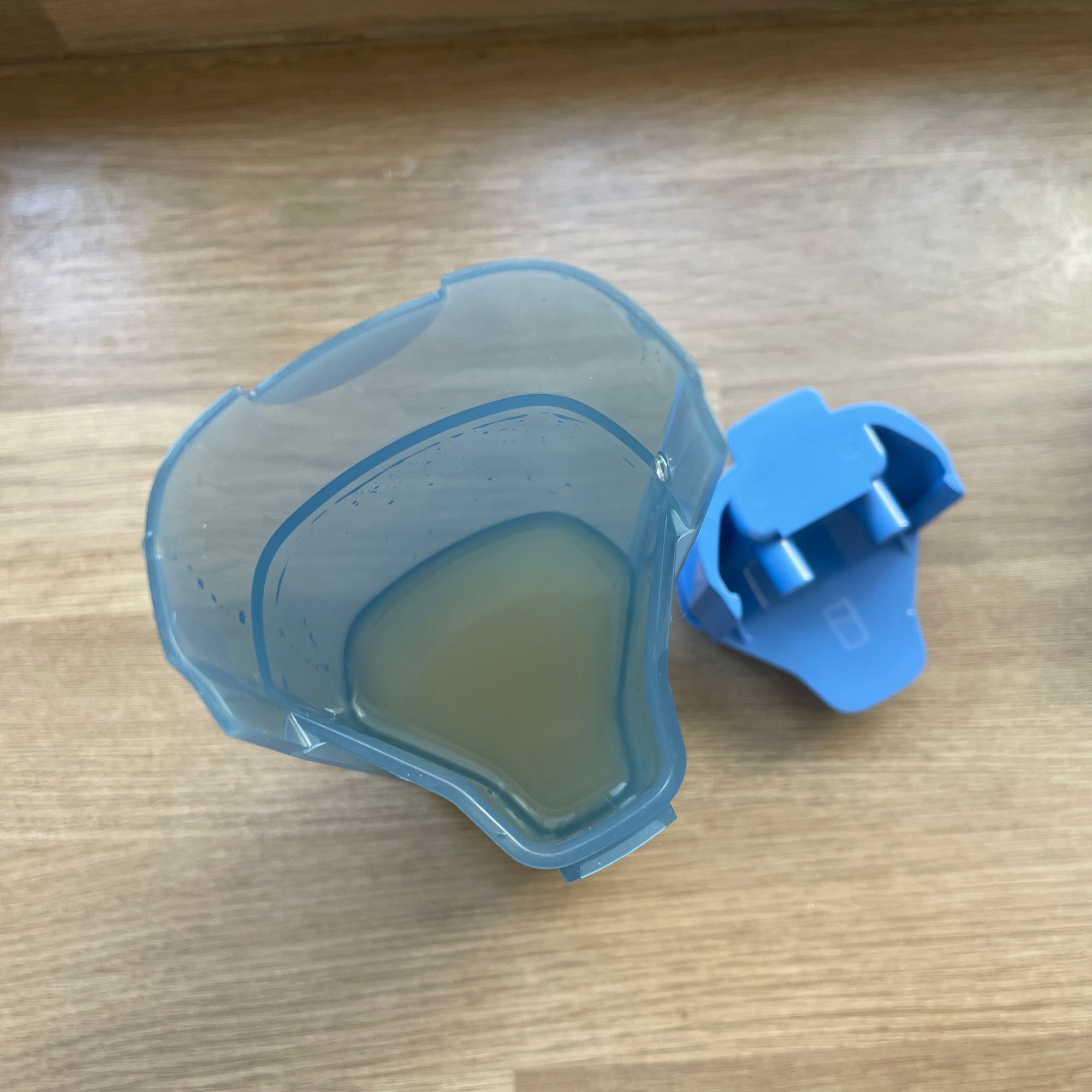
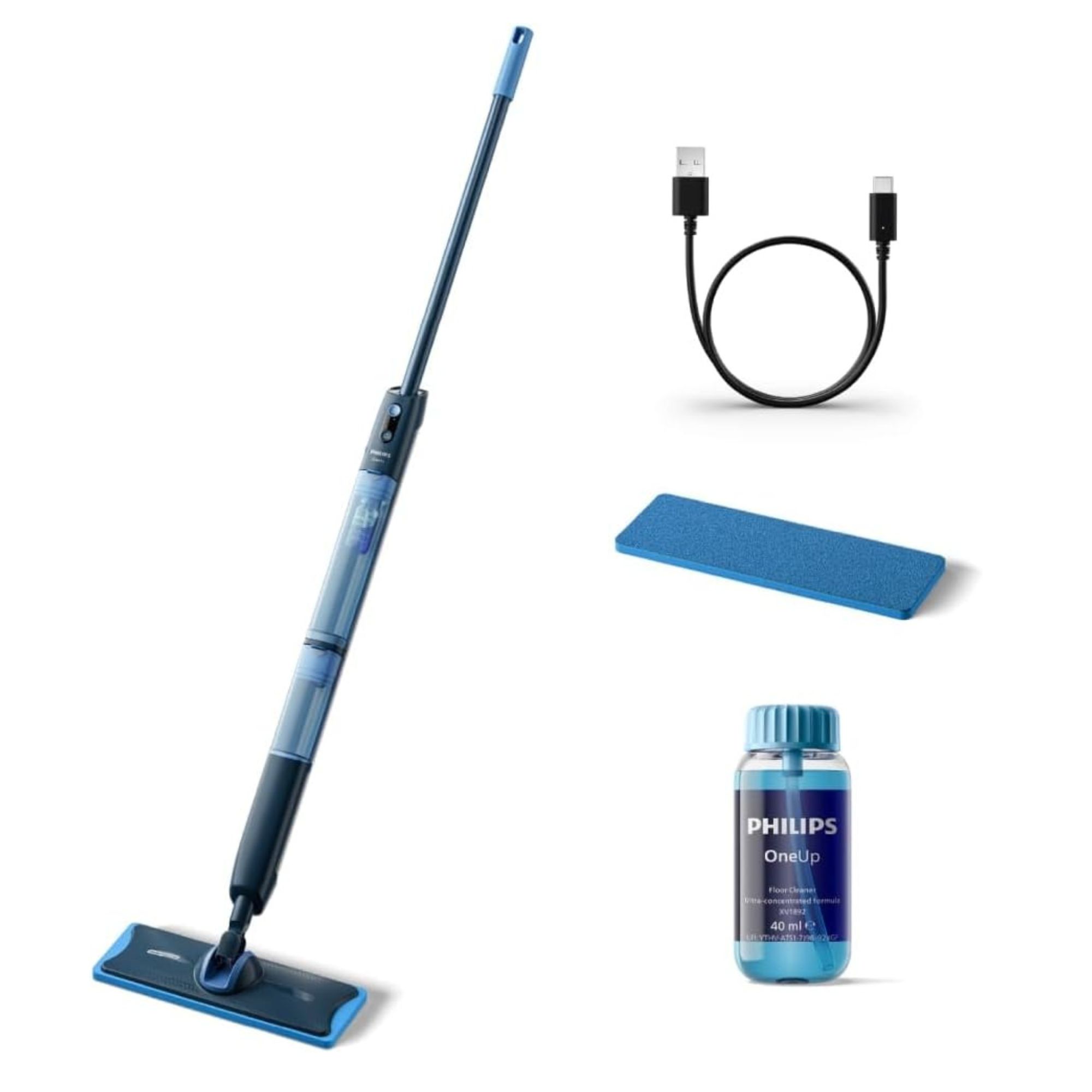
3. Philips OneUp 5000 Series Electric Mop
Our expert review:
Specifications
Reasons to buy
Reasons to avoid
Electric mops are becoming increasingly popular, and the Philips OneUp 5000 Series Electric Mop is one of the newest additions to the group. It looks sleek and slimline and weighs next to nothing (just 1.9kg, to be exact), but inside is a lot of hidden technology to make floors sparkle.
Thanks to its dual chambers, the OneUp technology can pump clean water (and the cleaning solution) onto the floor for extra cleaning power, while also sucking up the dirty water and collecting it in the dirty water tank. It also offers up to 70 minutes of run time before it can be charged via the USB cable.
Features we loved during testing
The Philips OneUp Electric Mop was the first electric mop I'd tested, and it instantly impressed me. While I appreciate that traditional mops come in many shapes and sizes and offer a wide range of mop pads, the electric power of the Philips OneUp made a noticeable difference on my floors, and its pumping power really is effective.
Despite being electric, it's also super quiet, and the cleaning solution goes a long way. And another thing I really loved was the unrestricted movement, thanks to the lightweight mop and its mop head that has a 360° rotating hinge to get into all kinds of nooks and crannies - and get right up to skirting boards.
I was a little dubious about putting the mop head into the washing machine as I assumed that would affect the electrical side of things, but it came out good as new afterwards. However, this kind of mop does come with a much higher price tag, which may be a dealbreaker for some. It's worth noting that you can also buy the Philips OneUp 3000 Series Electric Mop for slightly cheaper at £99.99 at Amazon. It offers the same technology, but has a shorter run time.
Best mop for smaller homes



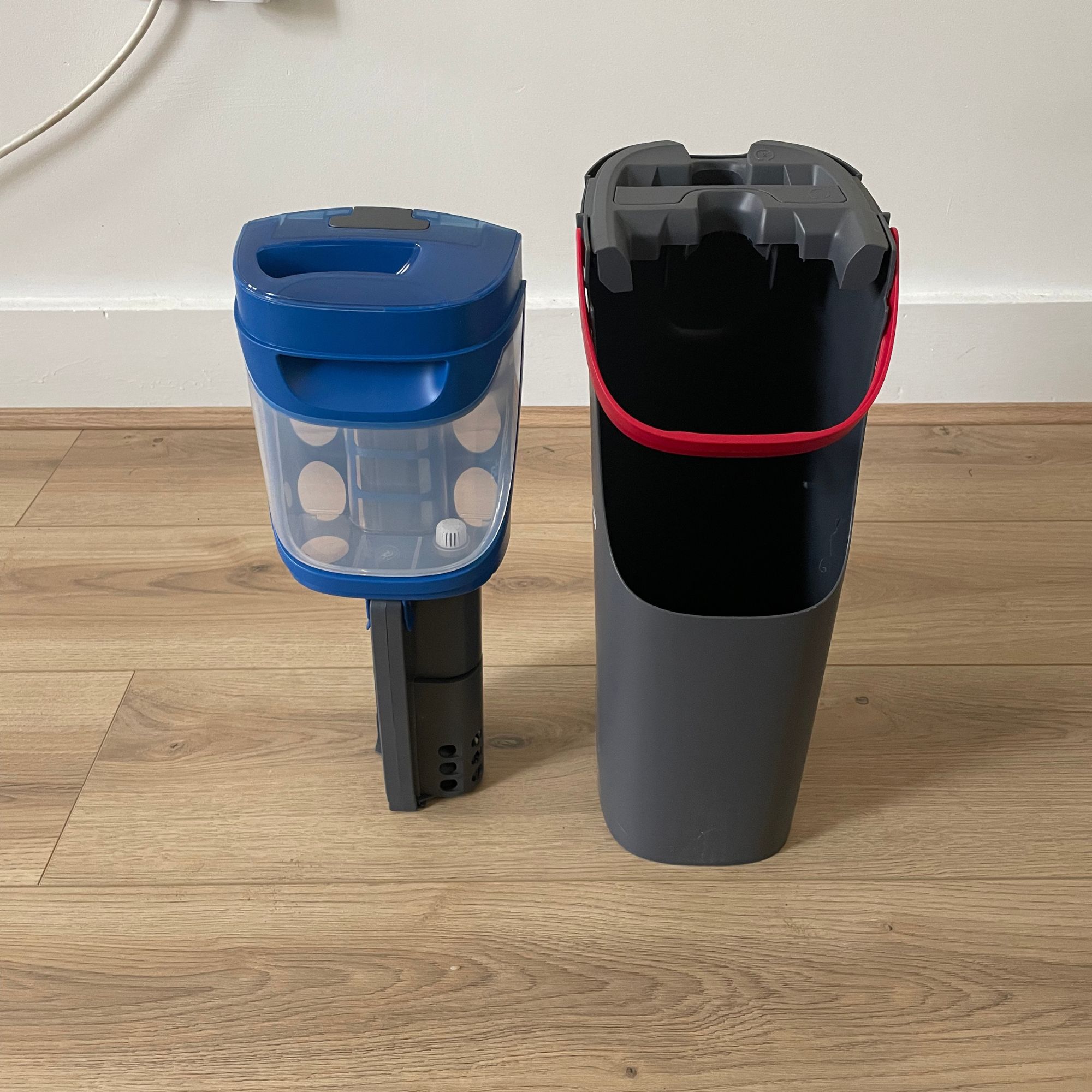


4. Vileda H20Pro Flat Mop
Our expert review:
Specifications
Reasons to buy
Reasons to avoid
Small and compact, this mop and bucket set is perfect for smaller homes with limited storage. The separate clean and dirty water tanks mean that you're always mopping your floors with clean water, and you can even use a cleaning solution for that extra punch.
While only a small amount of water is required for mopping, the innovative design still allows you to control how much moisture you want to use, and the brand claims that just 1.2 litres has the power to clean up to 60m² of flooring.
Features we loved during testing
As someone who has limited storage in my small home, the Vileda H2Pro Flat Mop was a big hit. Despite having a small footprint, I found it more than capable of cleaning the various types of hard flooring I have in my home - and the microfibre head was particularly impressive on my laminate.
I only needed one hand to spray the water and cleaning solution onto the mop, and the lightweight design of both the mop and the bucket itself meant that I could carry it around my home with ease. The machine-washable head also felt high-quality, and even lifted stubborn dirt off my kitchen tiles.
As if the small and slimline design of the bucket wasn't enough, I also loved that you can disassemble the handle into smaller sections, which then fit inside the bucket for easy storage. It's worth noting that I did find that the handle wanted to come a bit loose during testing, though. This was a little irritating, but not a dealbreaker for me - especially when I took a bit more time to screw the pieces together as tight as possible.
Best microfibre mop
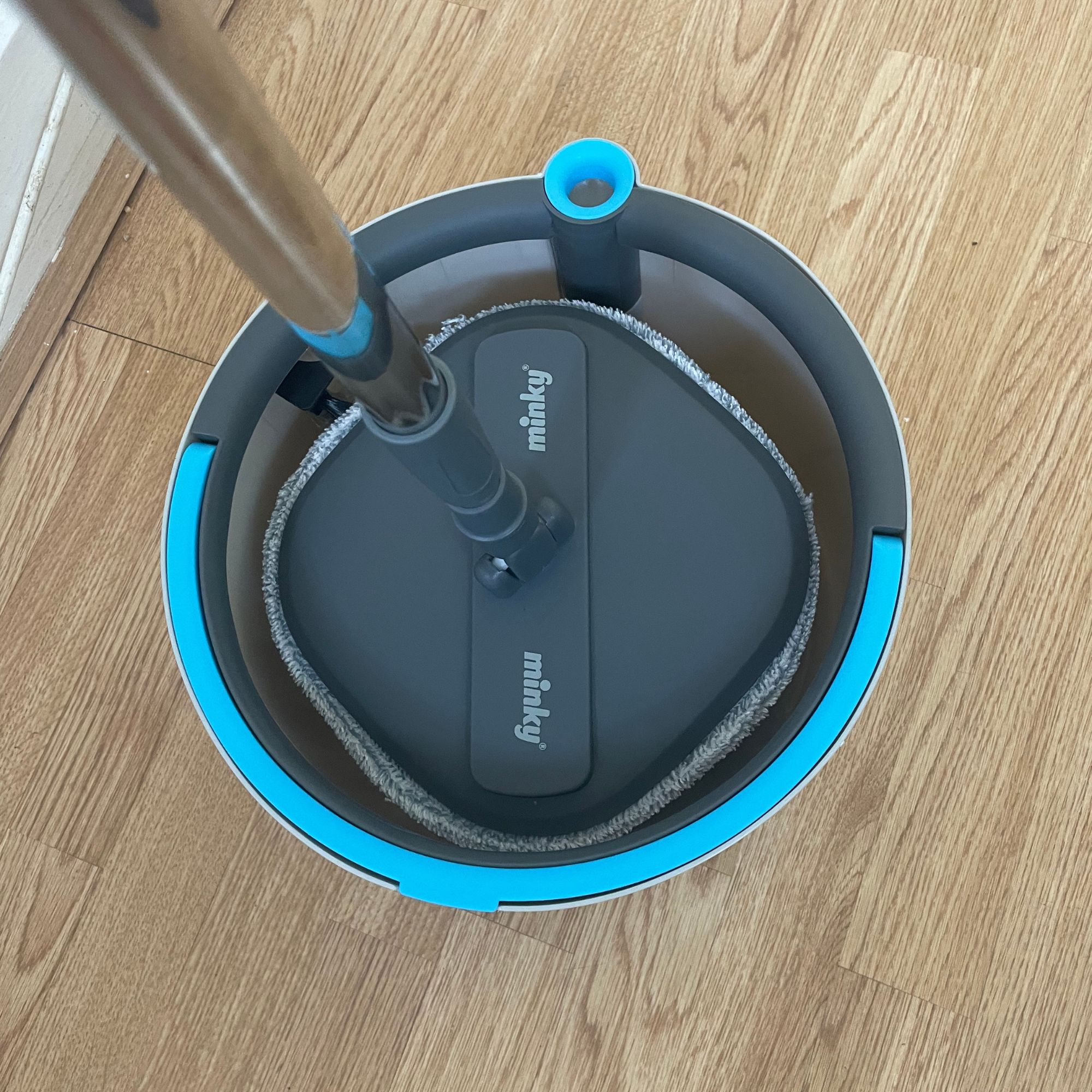
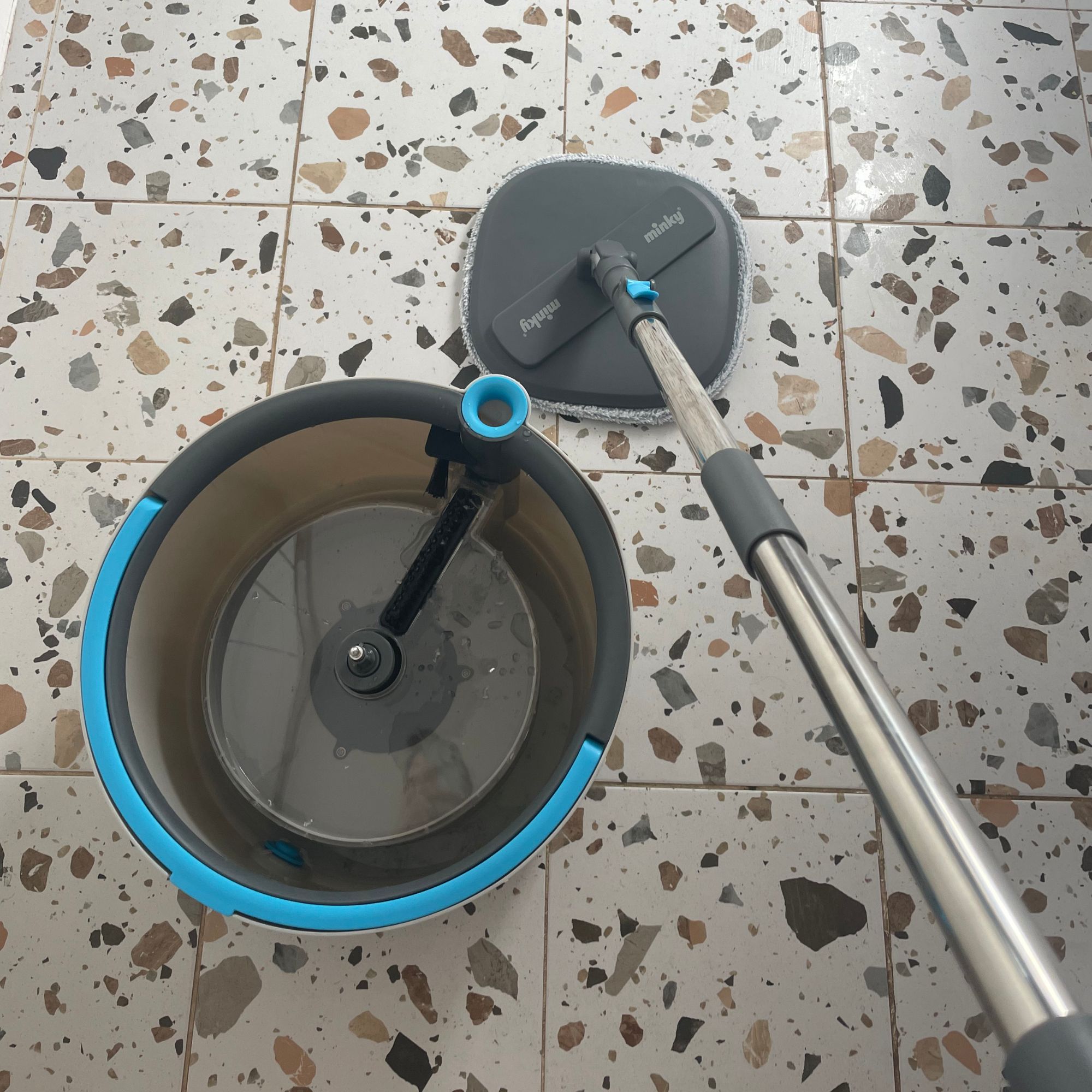
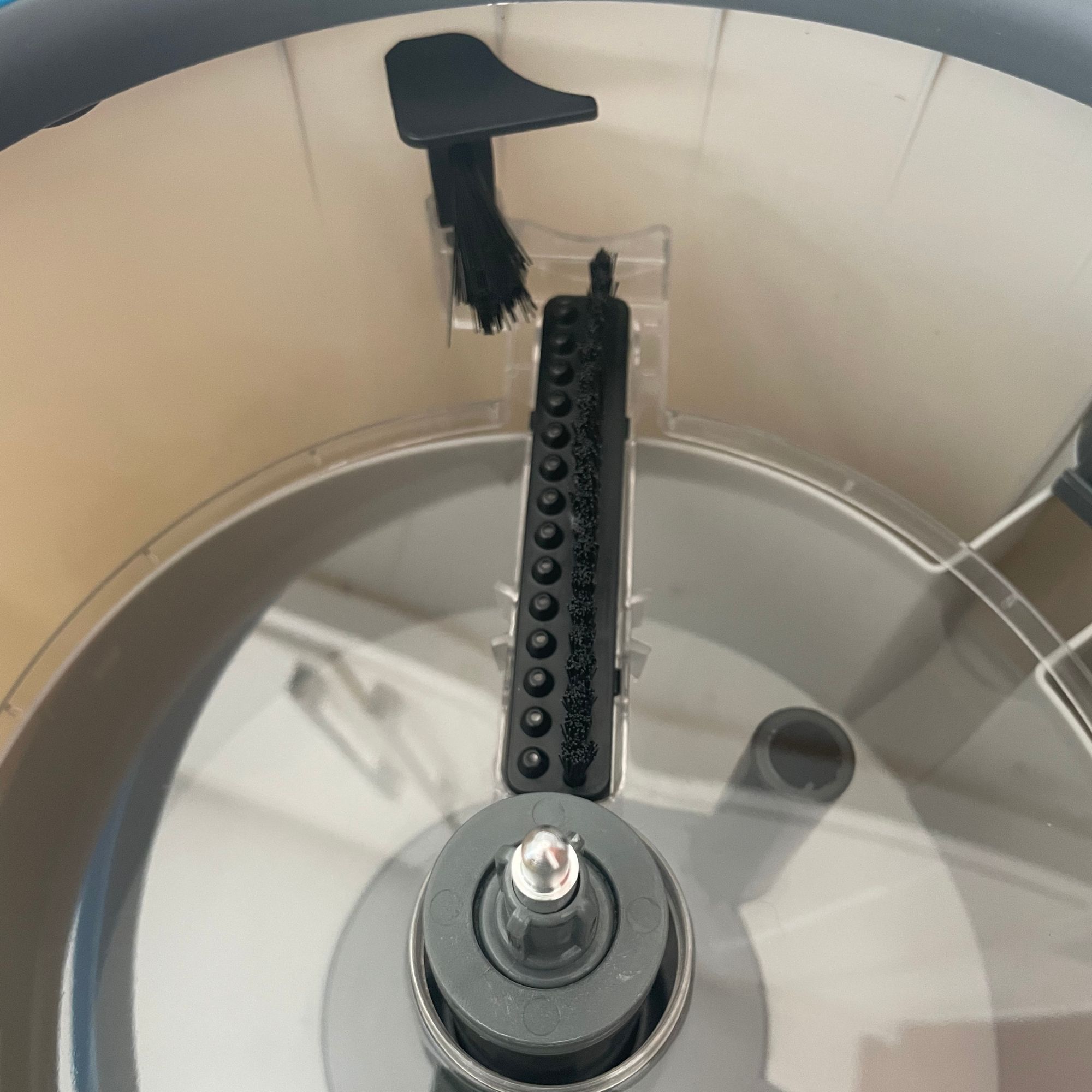


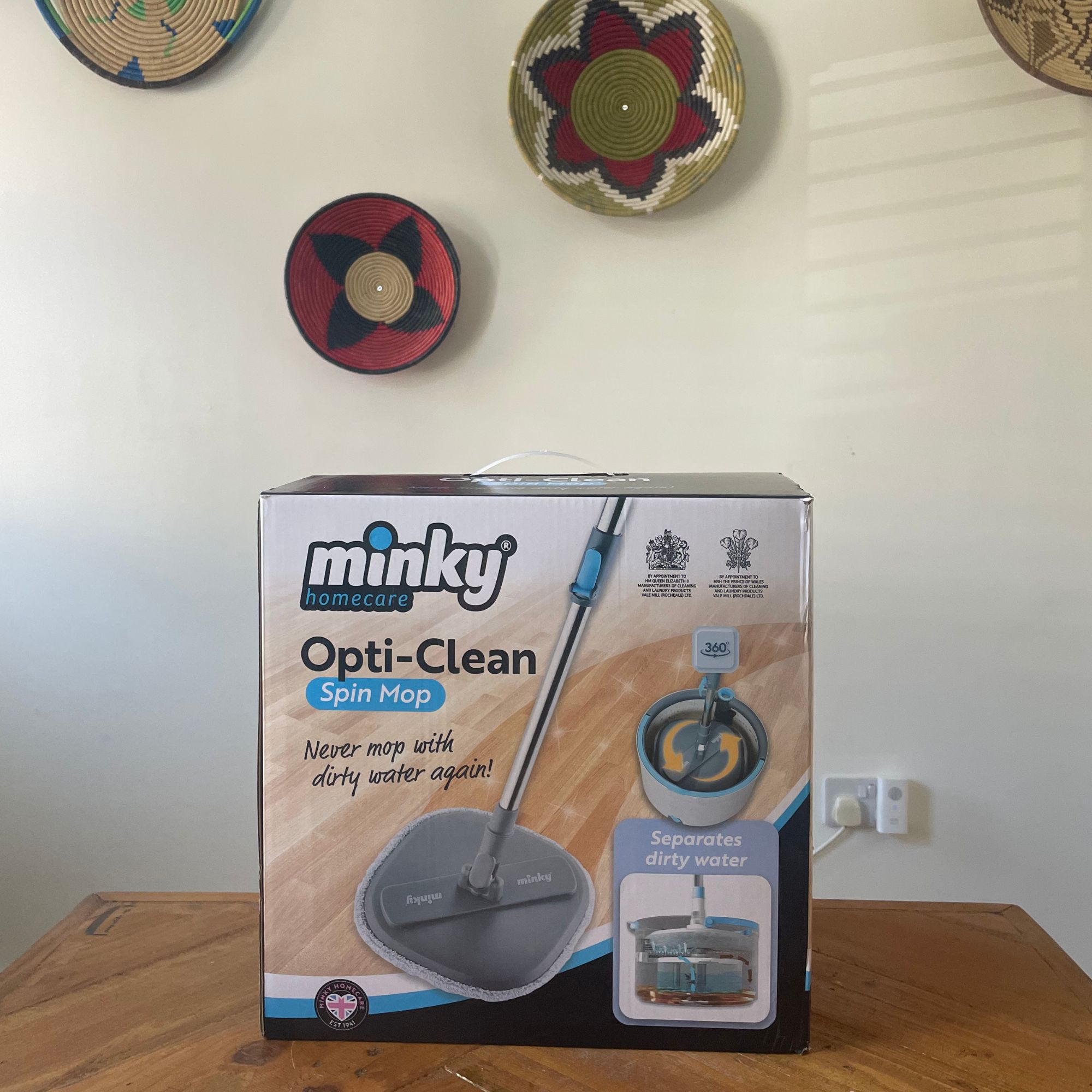

5. Minky Opti-Clean Spin Mop
Our expert review:
Specifications
Reasons to buy
Reasons to avoid
Ever worry if your microfibre mop is actually just spreading germs about and not really cleaning your floors? Well, the Minky Opti-Clean Spin Mop takes those worries away as it features an innovative dual cavity bucket that separates dirty and clean water and a powerful 360° spin, rinse, and wringing system that works alongside scrubbing bristles to clean the reusable microfibre head mid-mop.
The bucket, with its sturdy handle, can be easily filled under a tap and any dirty water can be drained away by removing the blue plug. It's perfect for homes with limited storage too because the mop easily comes apart so you can conveniently put it away after use, but just be warned that the bucket is still fairly large.
Features we loved during testing
I must admit that I really enjoyed testing the Minky Opti-Clean Spin Mop. It was incredibly easy to assemble, took seconds to fill up the clean water tank, and the microfibre head is undoubtedly the best for cleaning. In fact, my floors were literally squeaking after cleaning with this mop.
Throughout the cleaning process, I felt extremely confident that I was only ever cleaning my floors with a clean mop head - and not just because I went in for a spin to get off the dirty water now and then. This was also because of the scrubbing bristles within the bucket, which irritate the mop head to release any hidden dirt.
My only niggle with this mop (and the reason I didn't give it a full 5 stars) is because it can be quite difficult to get into a rhythm when using it. To spin the mop in the bucket, you have to repeatedly clip and unclip the blue toggle on the side of the handle. Nevertheless, I did get used to it and the impressive cleaning power made up for this in the end.
Best mop for hardwood floors


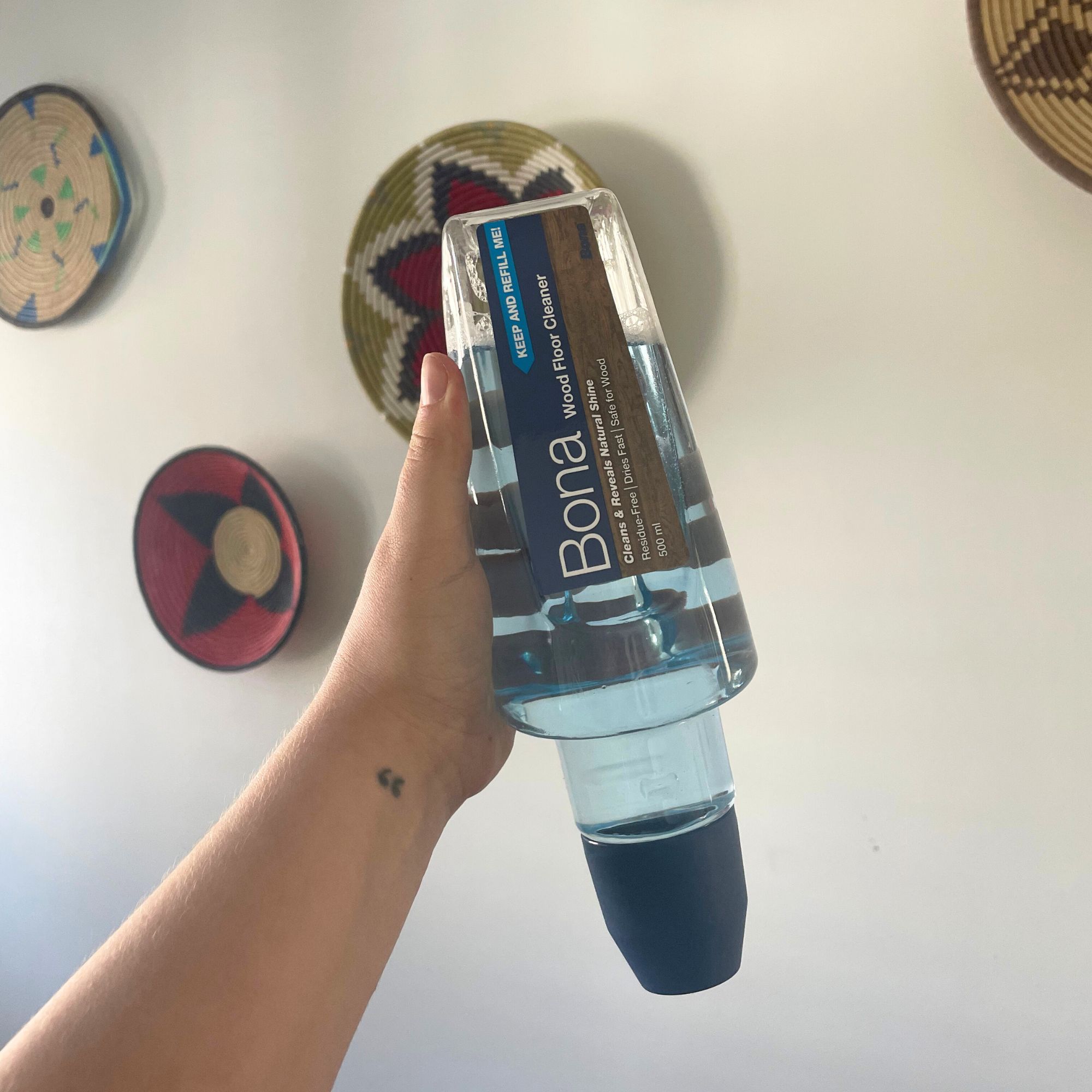
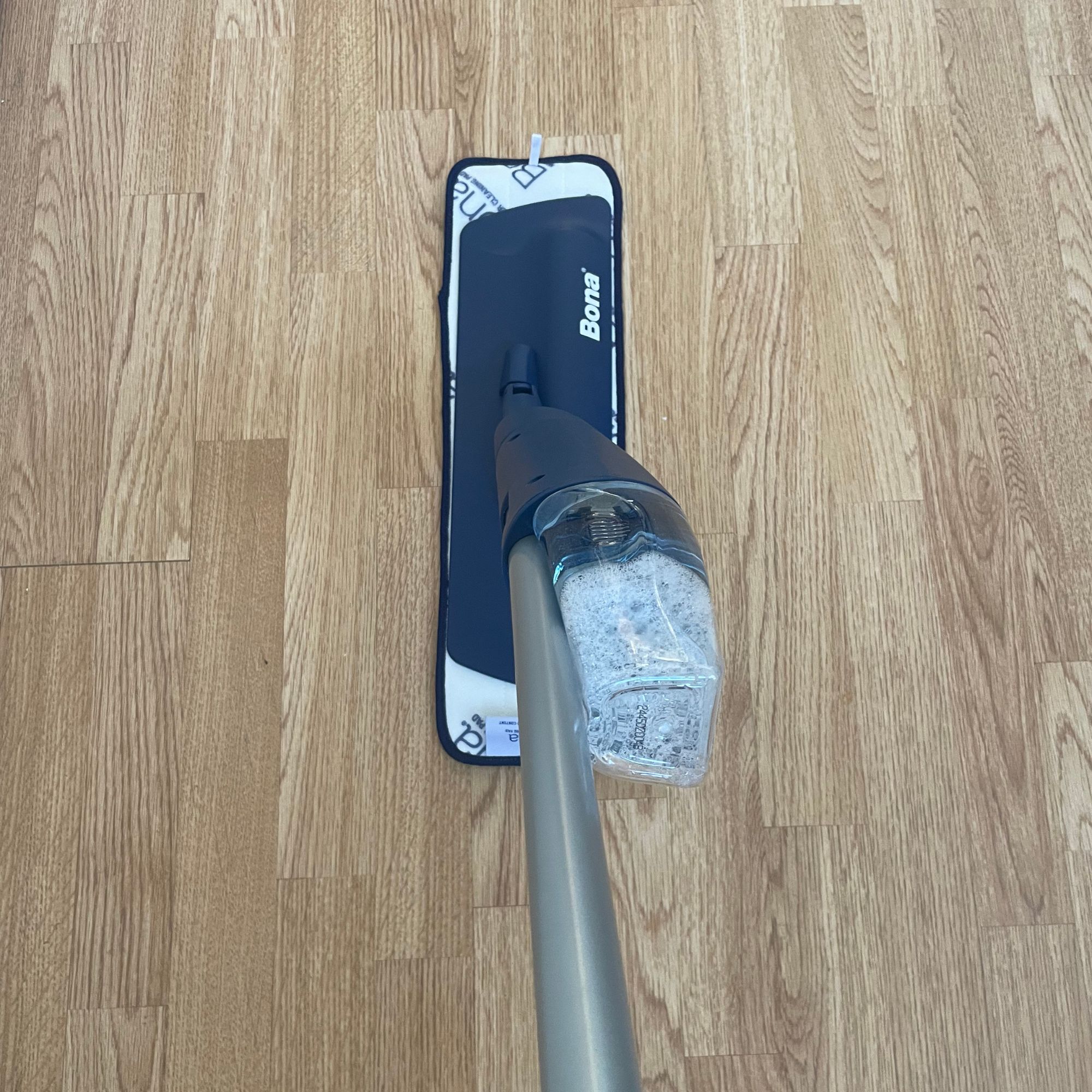

6. Bona Spray Mop Air For Wood Floors
Our expert review:
Specifications
Reasons to buy
Reasons to avoid
If you're wondering how to clean wooden floors, you'll know that there are some cleaning regimes you need to avoid. But that's where the Bona Spray Mop Air comes into play, as this mop has been specifically designed with wooden flooring in mind. In fact, the Bona Wood Floor Cleaner solution uses a pH neutral formula that protects and nourishes the wood.
This particular mop also has a swivel-mop head for those hard-to-reach areas and patented dual-zone microfibre material that traps dirty and provides more absorbency. So, it's extremely well made.
Features we loved during testing
During testing, I loved that the refillable cartridge simply slotted into place and was ready to go within seconds. All in all, it took me about two minutes from unboxing the spray mop to using it - and I have to say that the fine mist spray makes a nice change from some of the other mops I have tested.
It didn't feel like I was wasting the cleaning solution, but it still offered enough moisture to dampen my floors and ensure an easy glide of the mop head. This was made even easier by the fact that the mop is extremely lightweight and easy to manoeuvre around the house. Plus, you can simply pop the mop head into the washing machine when you're done, with Bona promising 500 washes before you'll need to replace it.
And while this mop is perfect for hardwood floors, you can also interchange the cleaning solution cartridge depending on the type of floor you are cleaning, with a stone, tile, laminate and LVT version also available.
Best mop for stubborn dirt
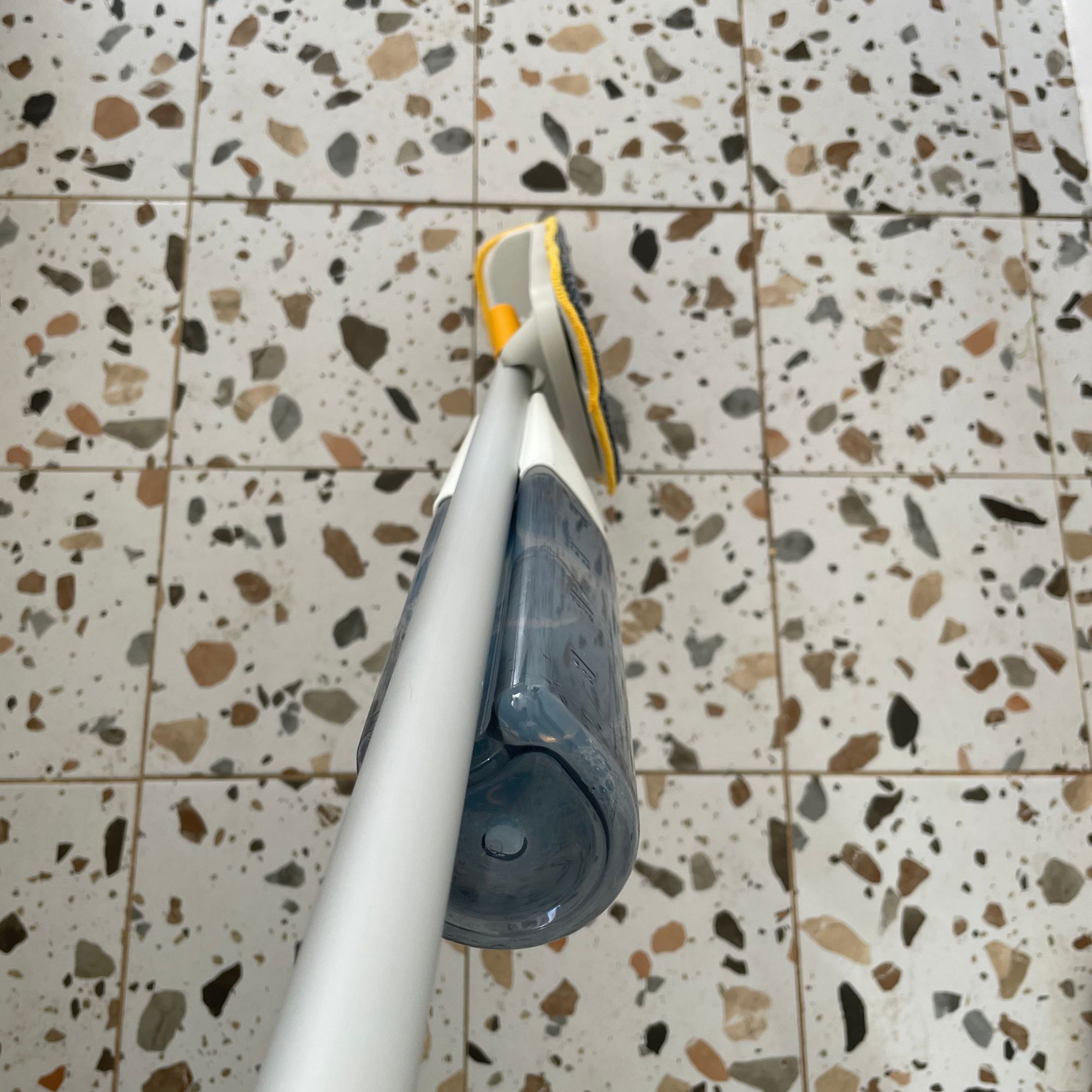
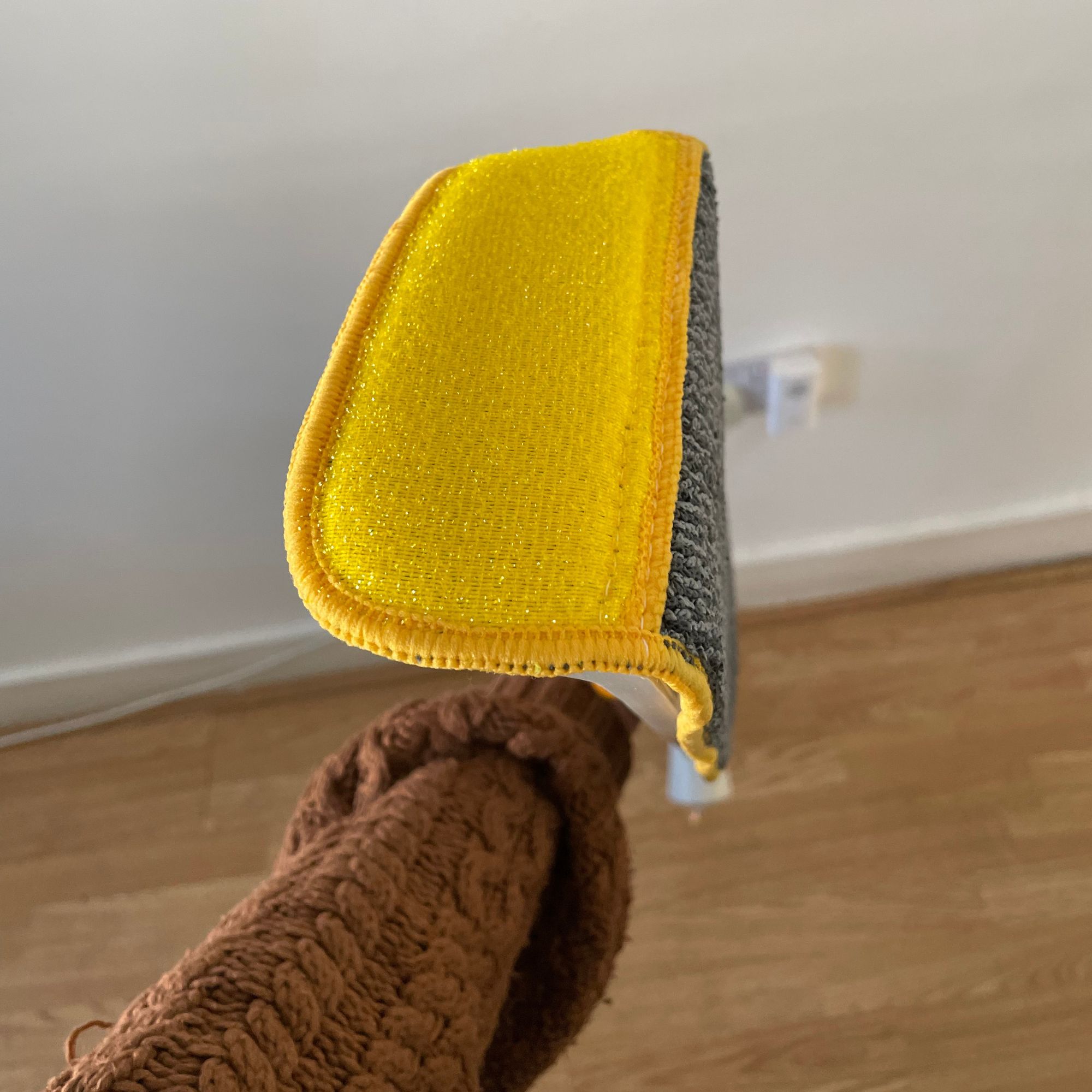
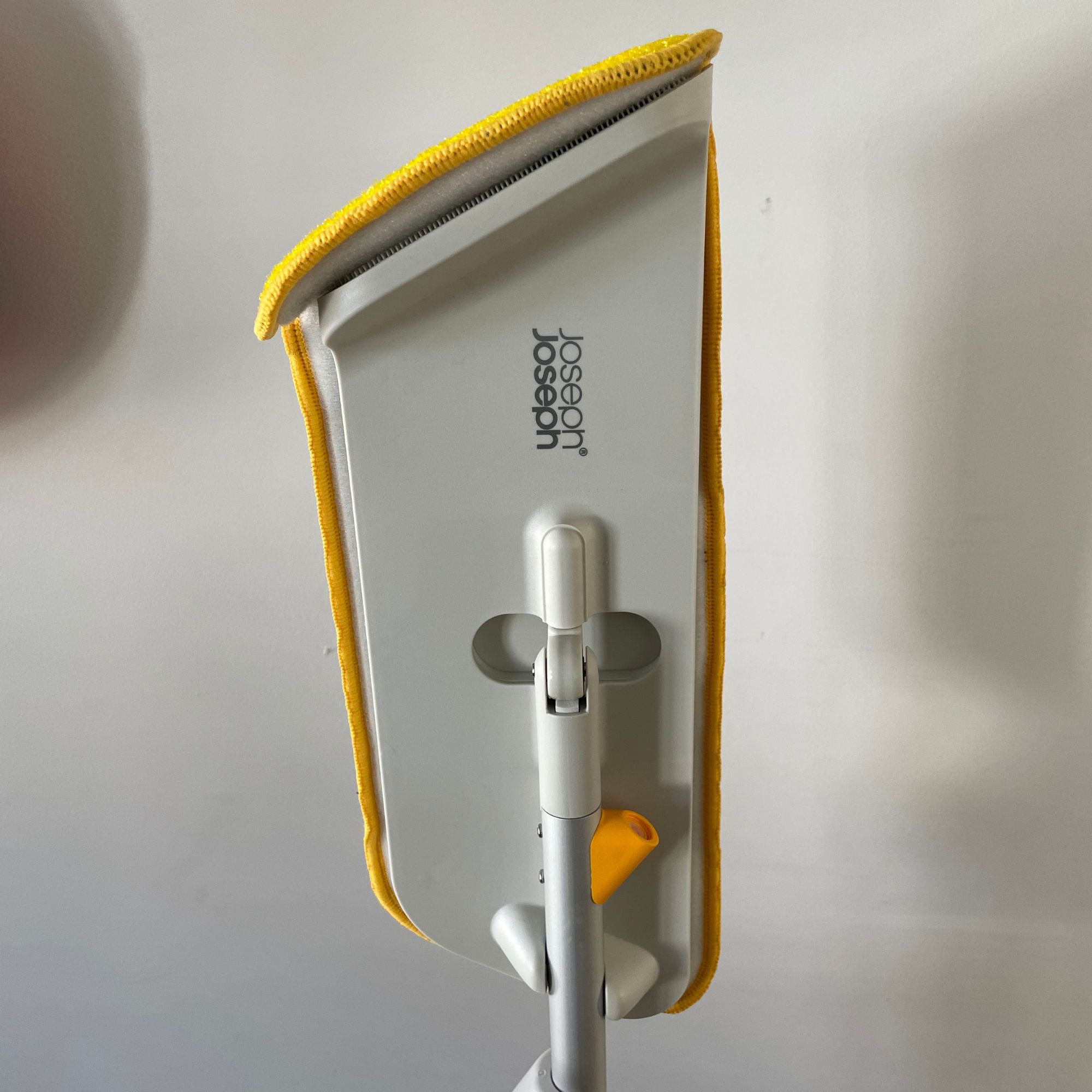
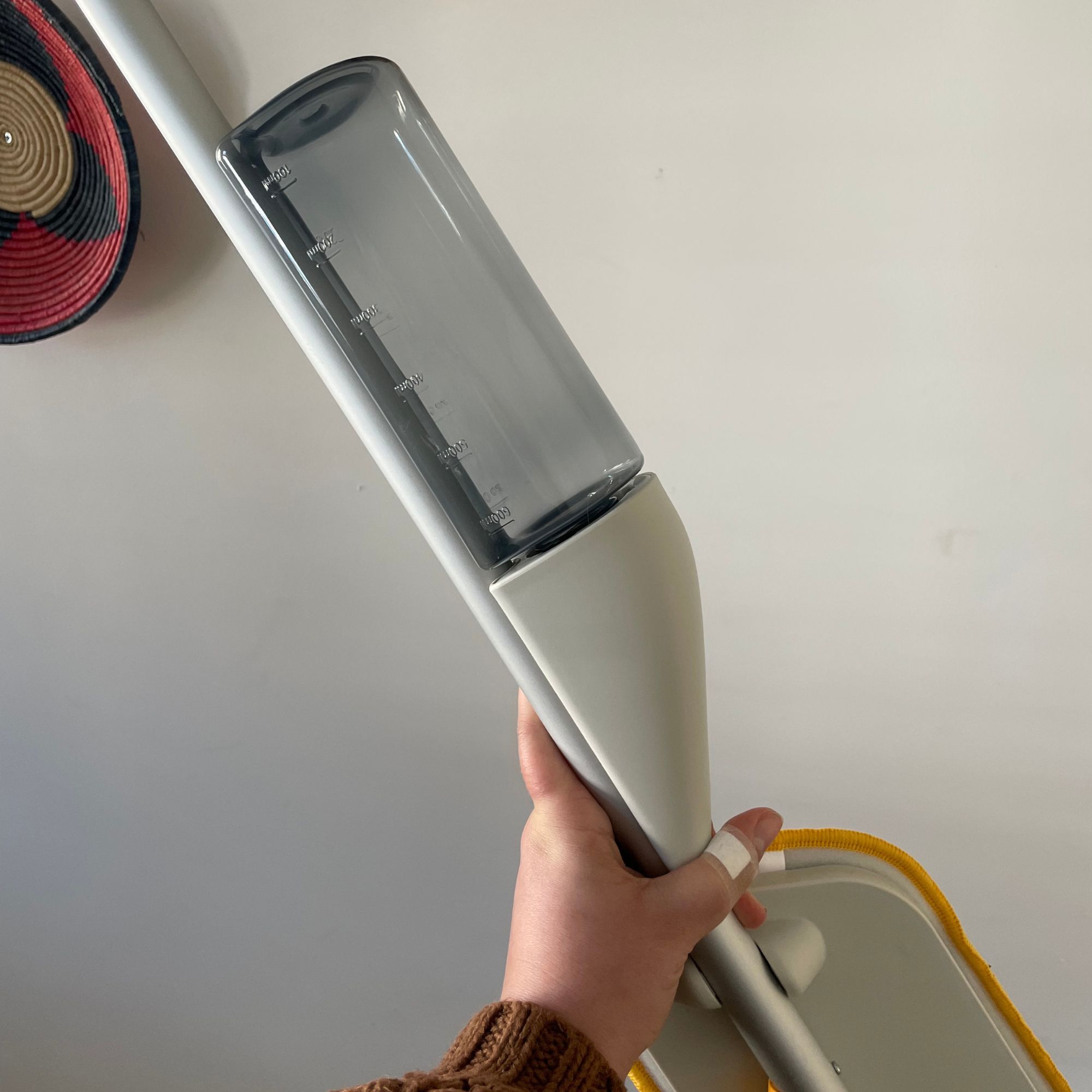
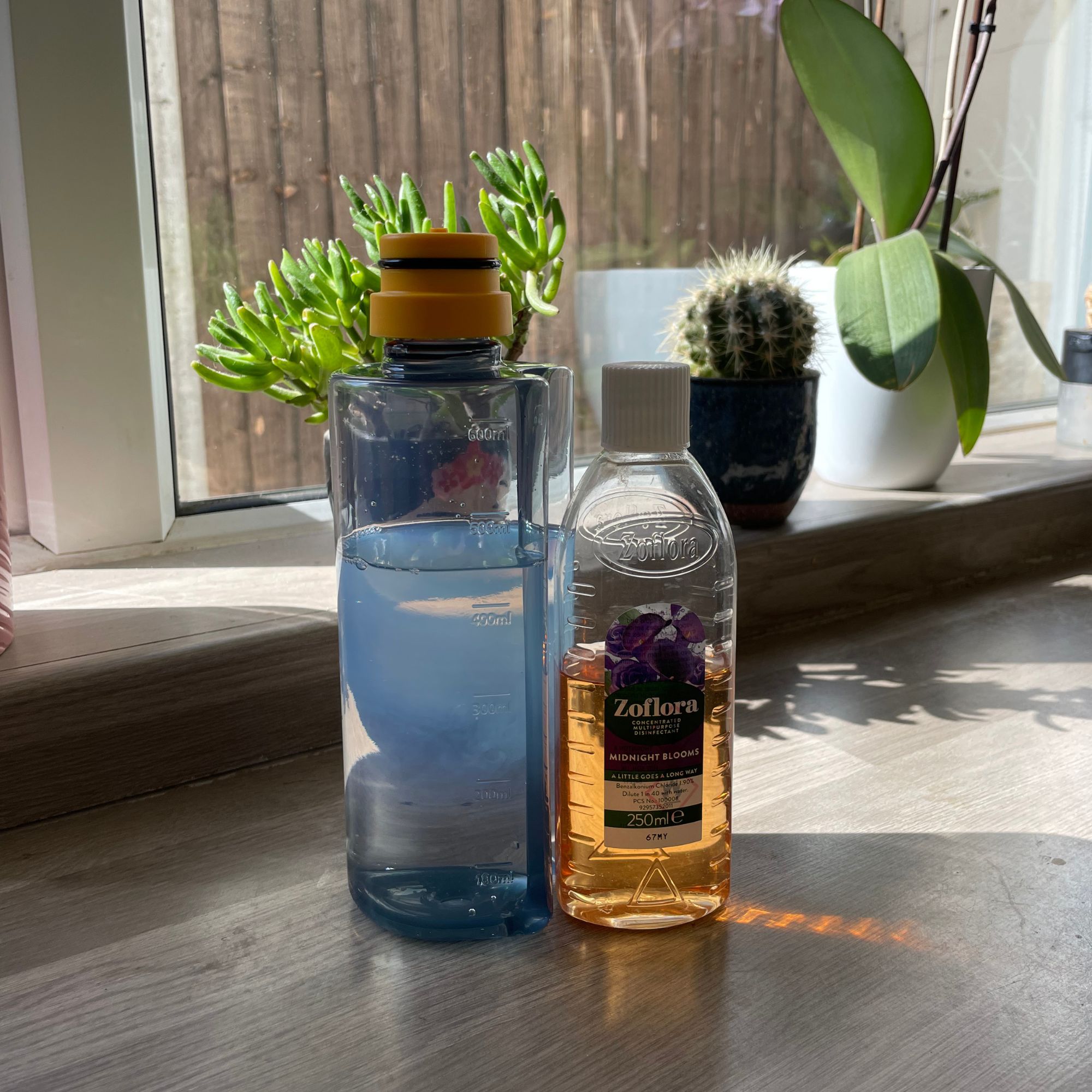
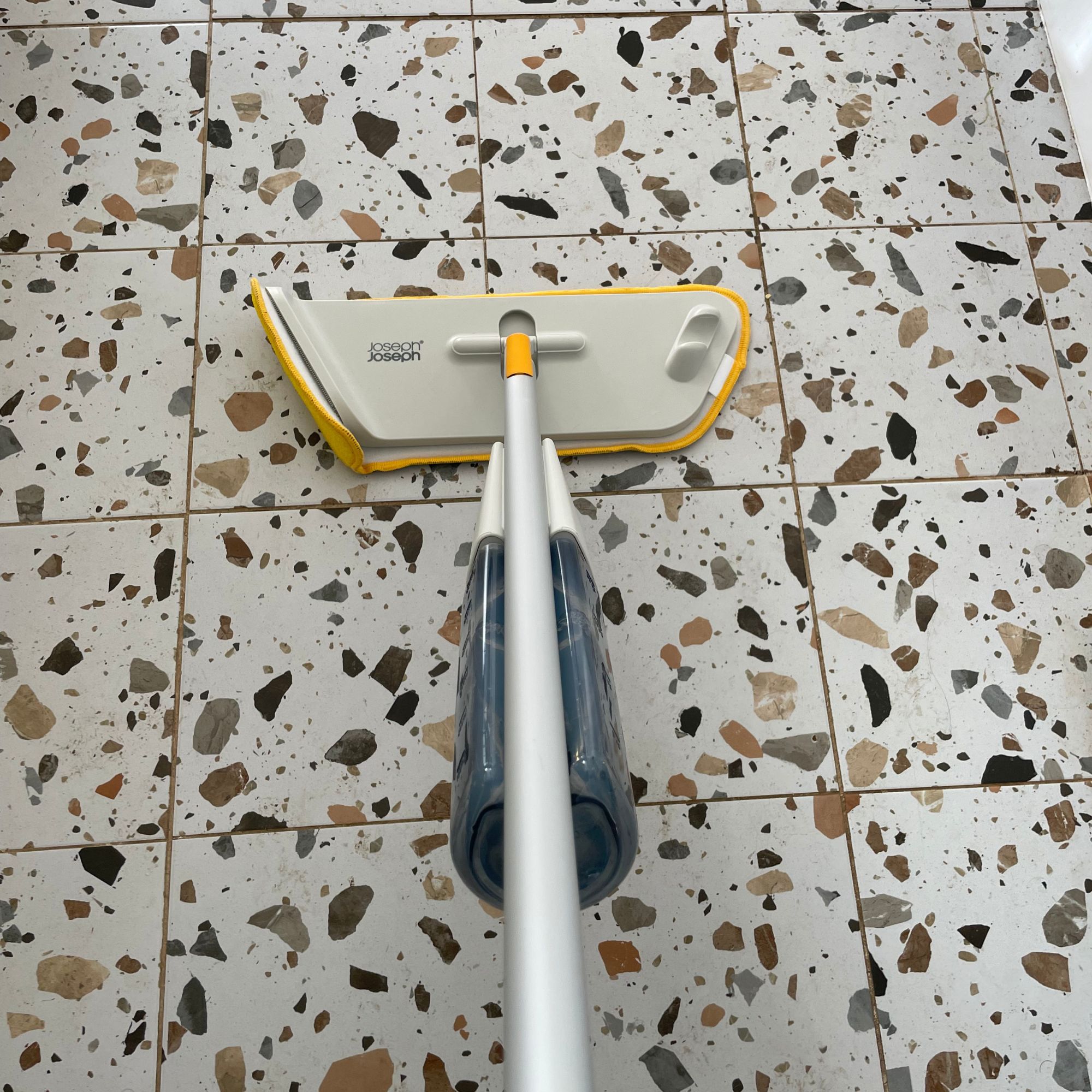
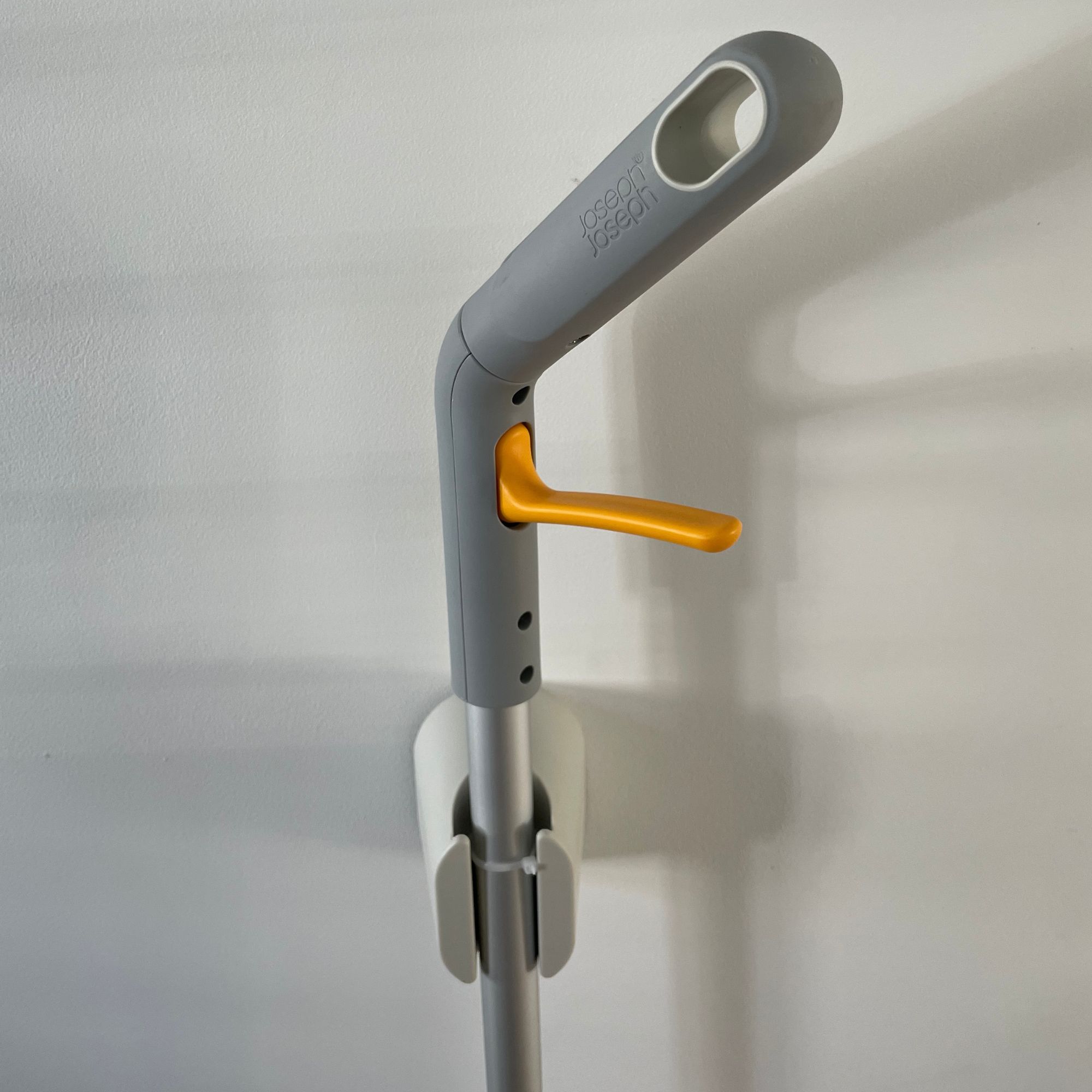

7. Joseph Joseph CleanTech 2-in-1 Spray Mop
Our expert review:
Specifications
Reasons to buy
Reasons to avoid
Part of the wider CleanTech range (which I've had the pleasure of testing), the Joseph Joseph CleanTech 2 in 1 Spray Mop is a new release from the space-saving brand and has been designed for everyday and targeted cleaning. This is thanks to the all-access rotating head that comes with a spot-cleaning scrubber pad on the side.
This means that you can use the larger, flatter microfibre mop head for everyday messes and spills, but then flip the mop head up to give dirty stains or stuck-on grime some extra attention. Plus, it comes with its own spray bottle and a wall-mounted storage bracket for easy storage.
Features we loved during testing
As someone who lives in a small house with limited storage, I'm a huge fan of Joseph Joseph products. And the fact that this particular mop can be flipped so the mop head tucks in and comes with a storage bracket for wall storage was a major plus point during testing.
It also offered impressive cleaning results, releasing just the right amount of cleaning solution to wet my floors without soaking them, and the way that the mop has been designed with the scrubber pad is genius. In fact, I used this feature way more than I thought I would, and it was a godsend when I had dried-on mud stains and tougher grime to contend with (especially in the kitchen).
I do think the Minky Spritz & Spin Mop provides better overall results for general cleaning, but the Joseph Joseph is the mop I turn to when I need to clean up dried-on stains and spills that typically require a tougher, more targeted clean.
The only thing I did find was that the cleaning solution did seem to catch in the little divet on the mop head, so I had to pour it out when I'd finished cleaning. I also thought it seemed extremely tall, and at 145 cm, it does offer one of the longest mop handles I tested. However, at just 5'2", it doesn't take much for a mop to feel tall to me.
Best smart mop

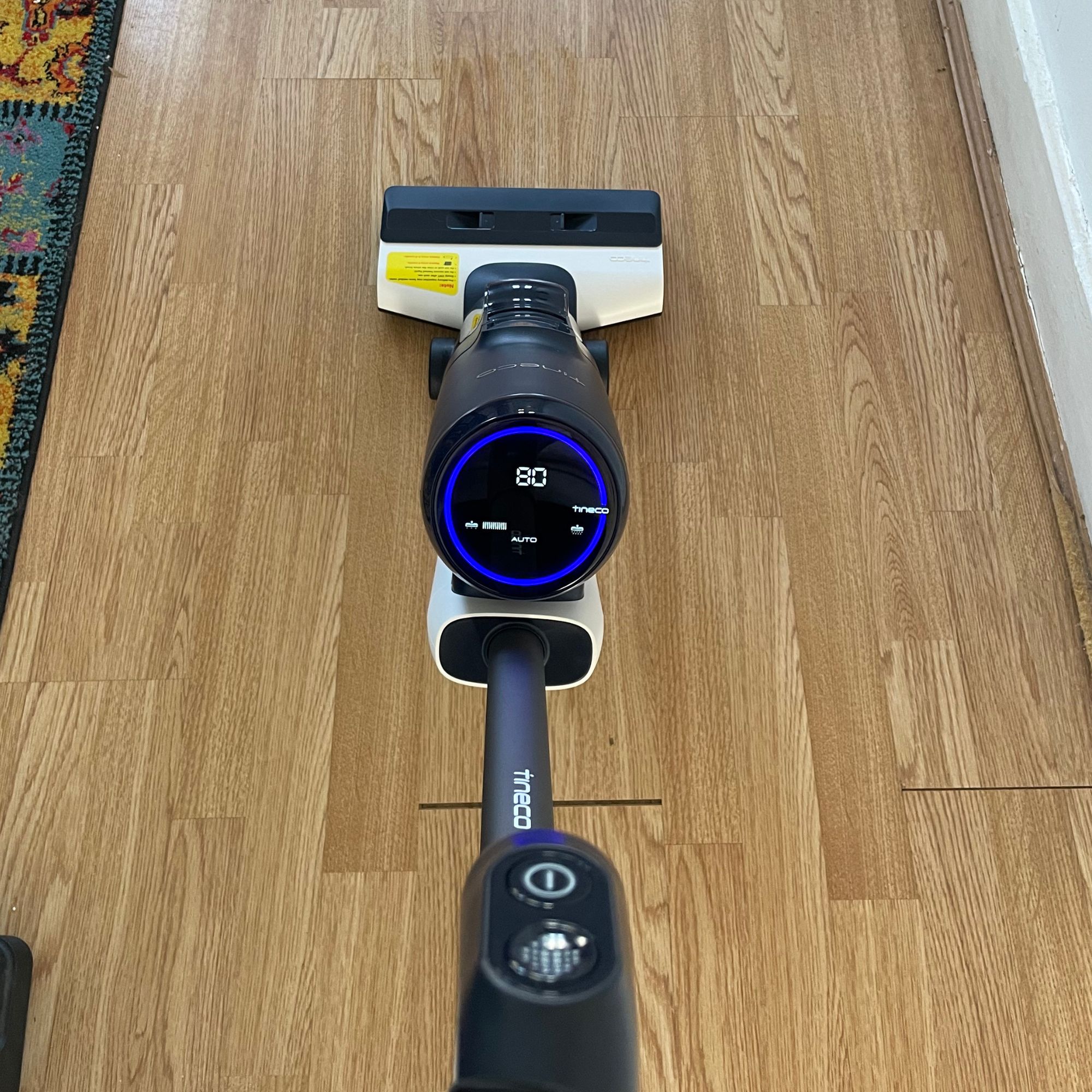
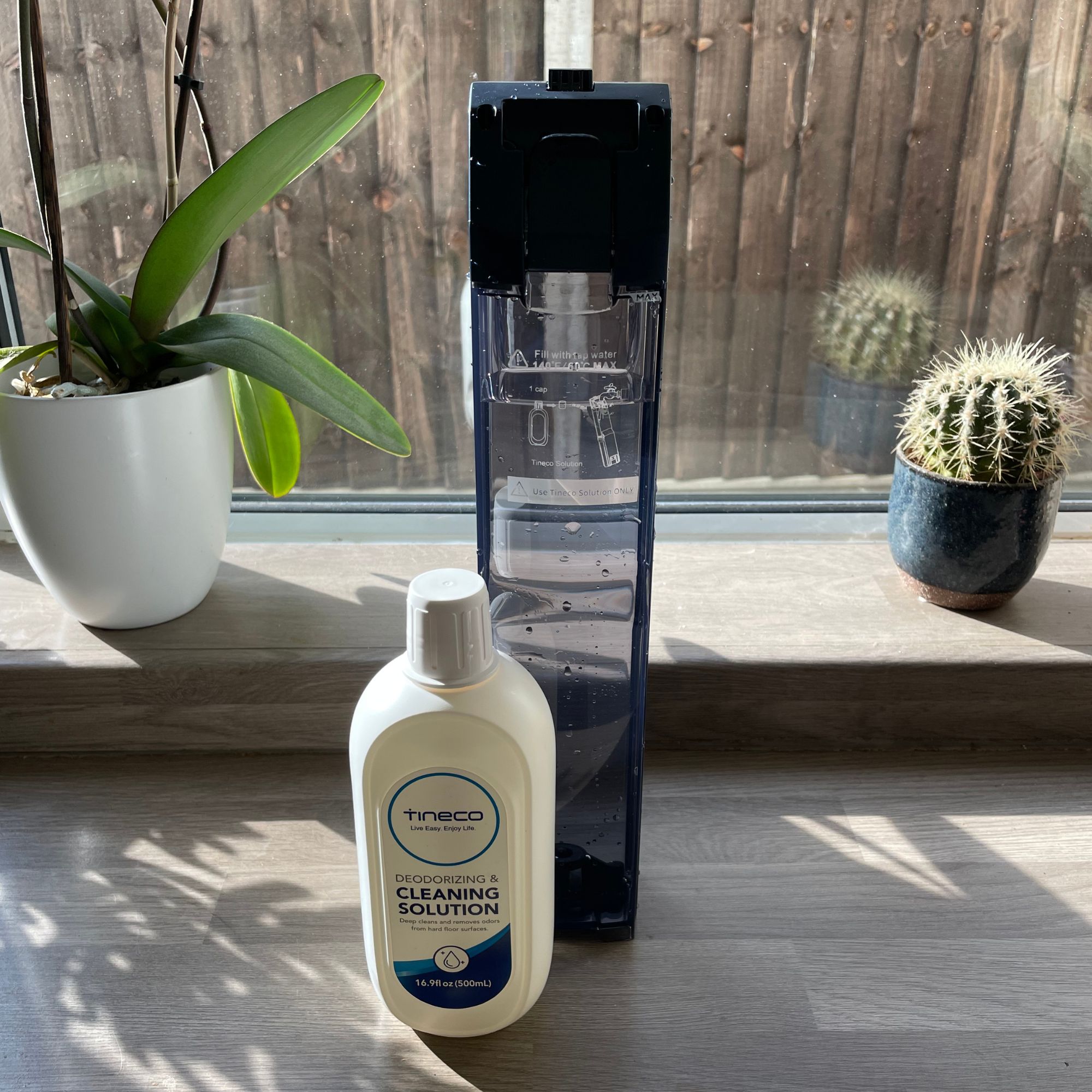

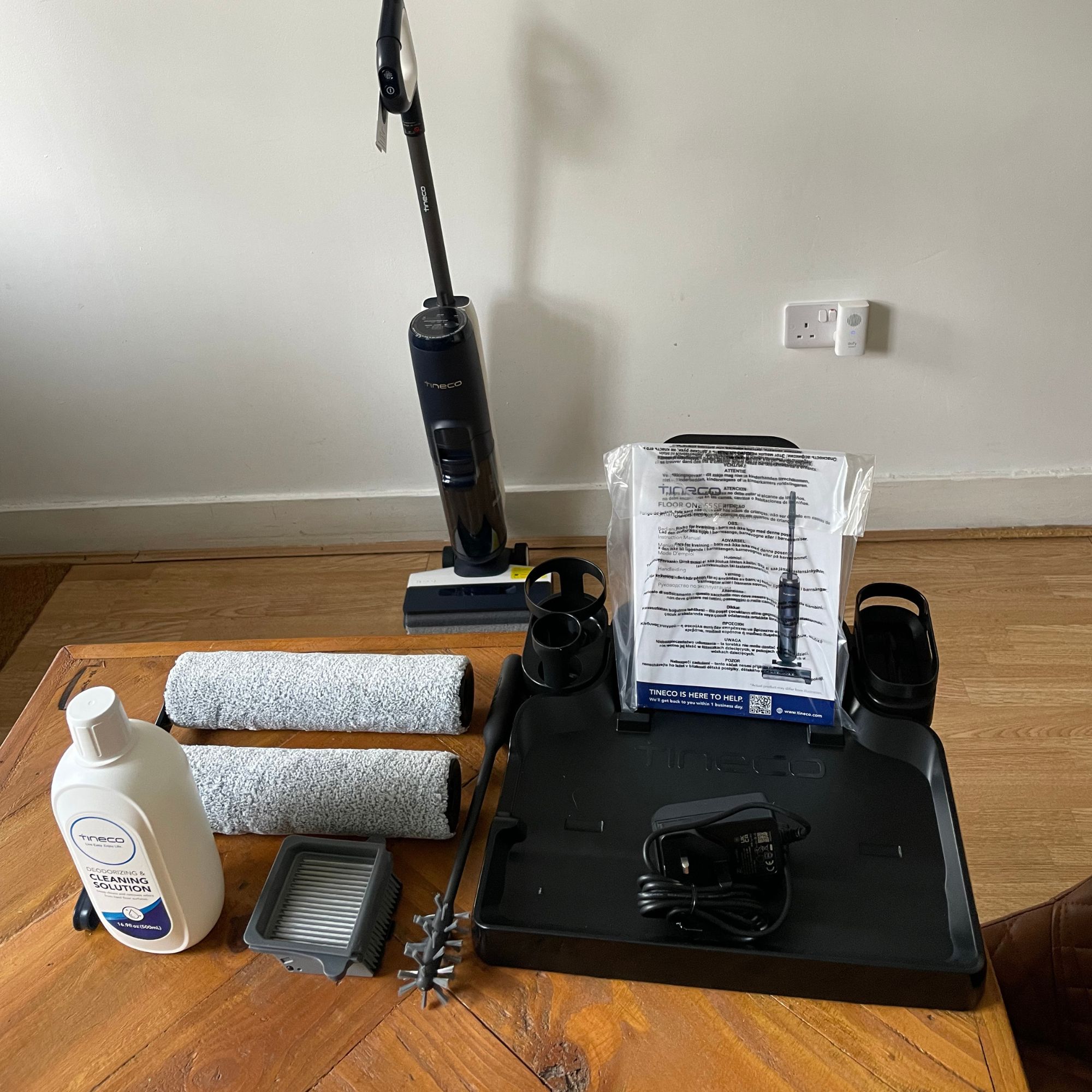
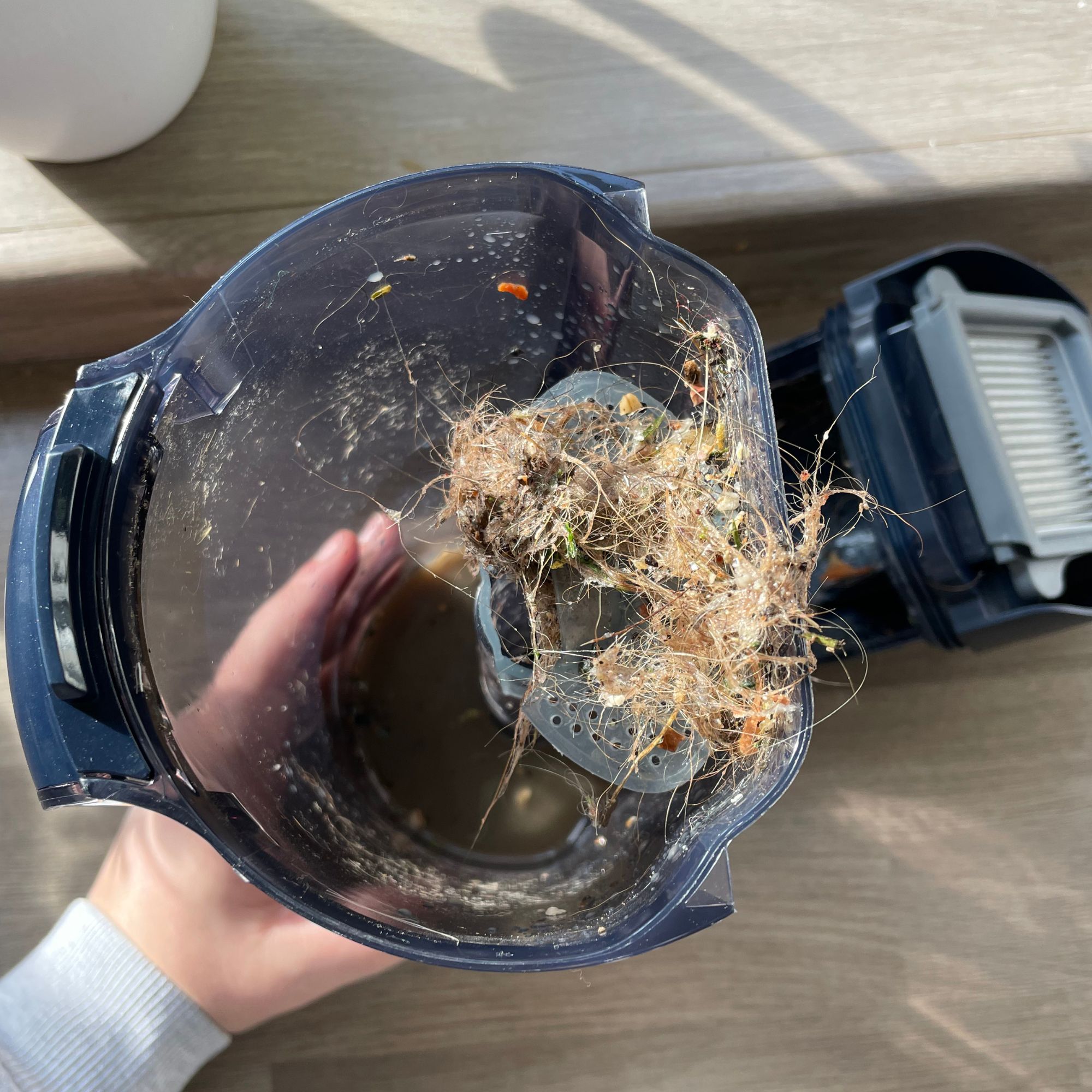
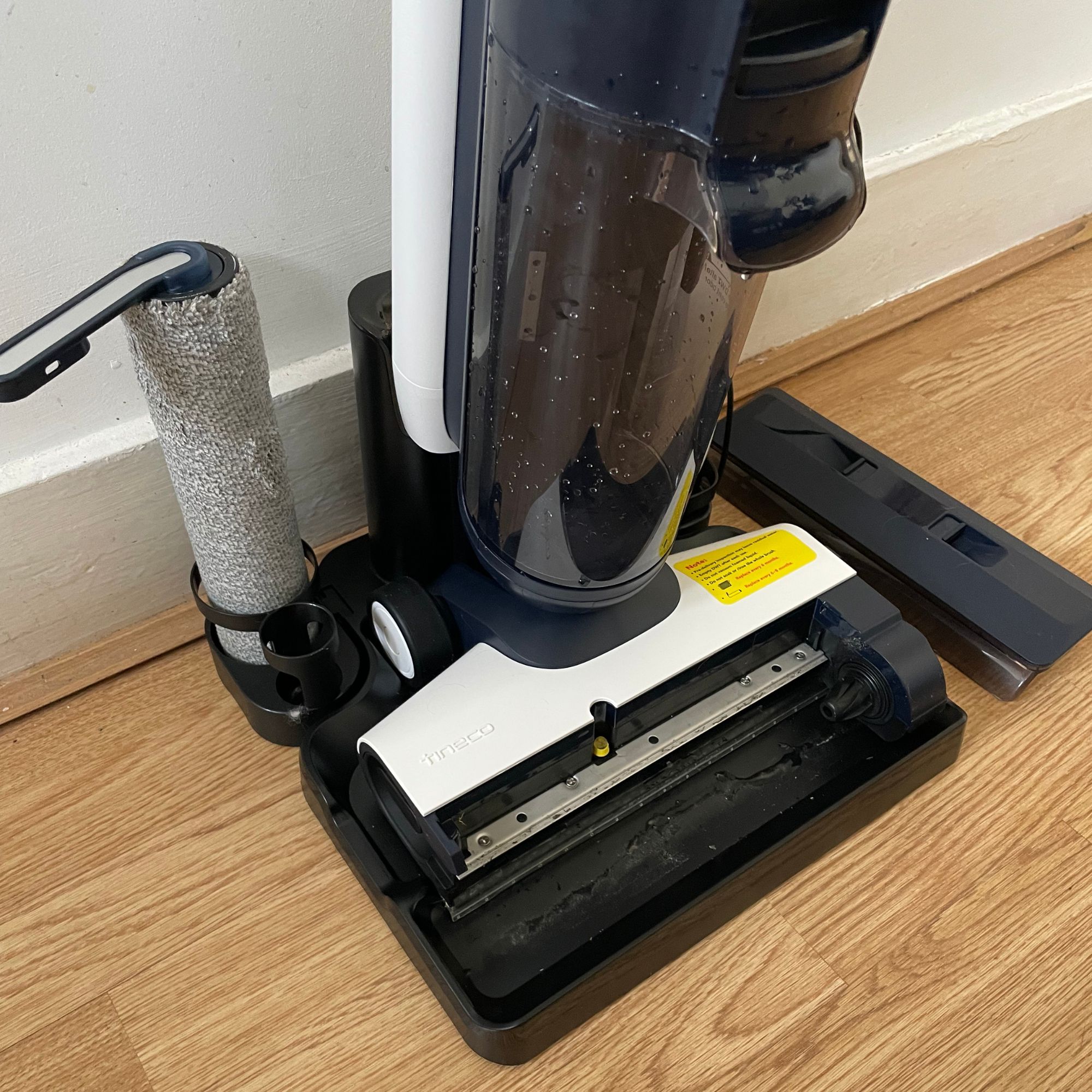

8. Tineco FLOOR ONE S5 Smart Vacuum Cleaner and Mop
Our expert review:
Specifications
Reasons to buy
Reasons to avoid
The Tineco FLOOR ONE S5 Smart Vacuum Cleaner and Mop takes all of the hassle out of mopping and assures you don't need to choose between vacuuming vs mopping. The brand's proprietary iLoop Smart Sensor Technology automatically adjusts suction, water speed, and brush roller speed to suit the needs of your home, and it's also self-cleaning.
Featuring separate clean and dirty water tanks, you can also ensure that you're only ever cleaning your hard flooring with clean water - and this particular model also comes with spare rollers and a cleaning solution to make sure you're always getting the best results.
Features we loved during testing
I absolutely loved testing the Tineco FLOOR ONE S5 Smart Vacuum Cleaner and Mop, and it's since become my go-to when I want to use something more powerful than a traditional mop. The LCD screen and colour symbols let you know which areas of your home require a little TLC, and the fact that it automatically adjusts its cleaning power in these areas offers a hands-off approach that I really enjoyed.
Although the voice commands can be a little startling at first, you soon get used to (and appreciate) that this smart mop tells you exactly what it needs - whether that's some extra charge or a self-cleaning cycle. As the owner of a fluffy dog that sheds, I also really appreciated the built-in pet hair strainer, which meant my home became pet-hair-free without getting tangled in the appliance in the process.
The docking station also comes with handy holders for the cleaning solution and the wet roller, something that certainly makes it stand out from wet floor cleaners like the Dyson WashG1 (which always got a little smelly and musty when I reviewed it).
Read our full Tineco FLOOR ONE S5 Smart Vacuum Cleaner and Mop review for more details
Best steam mop
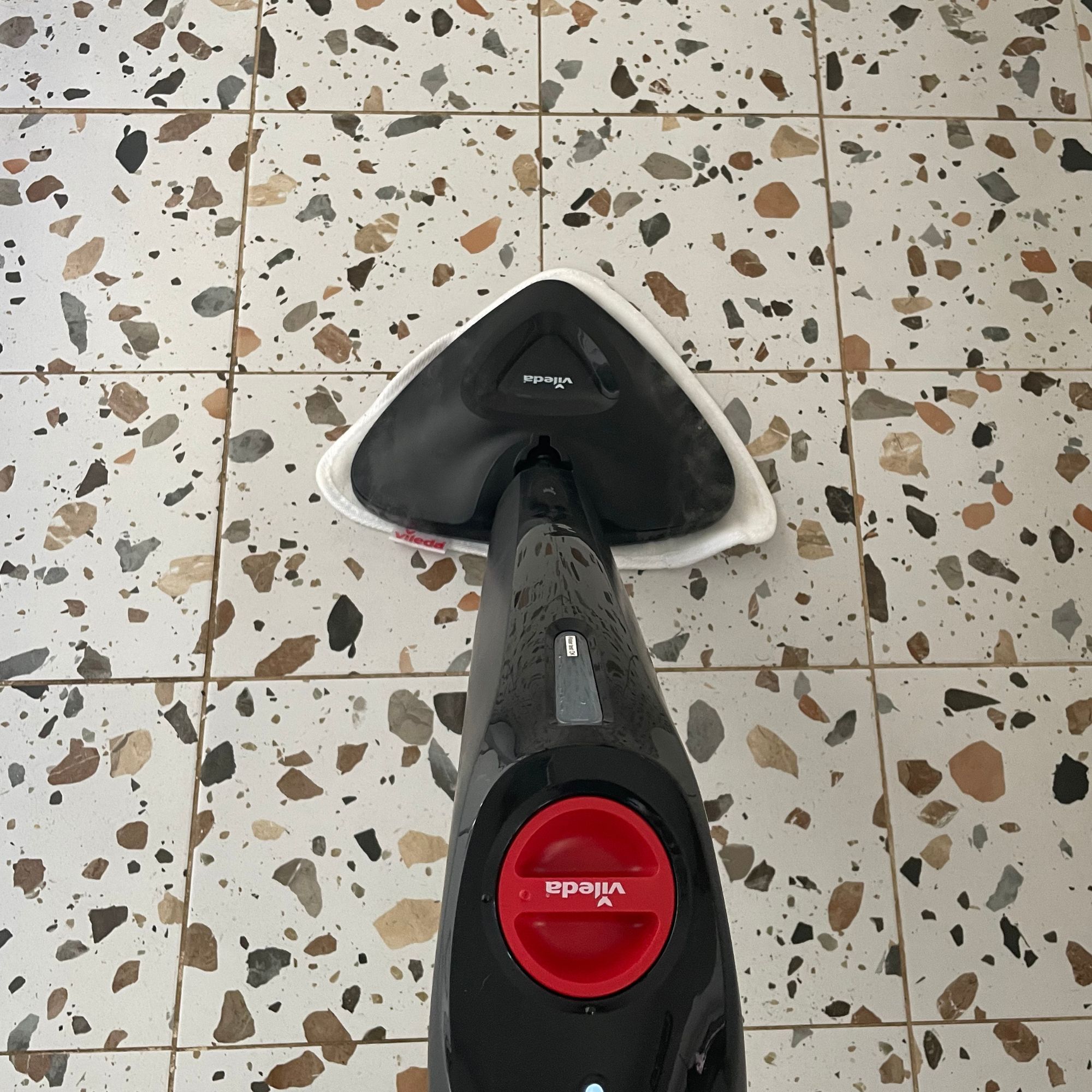

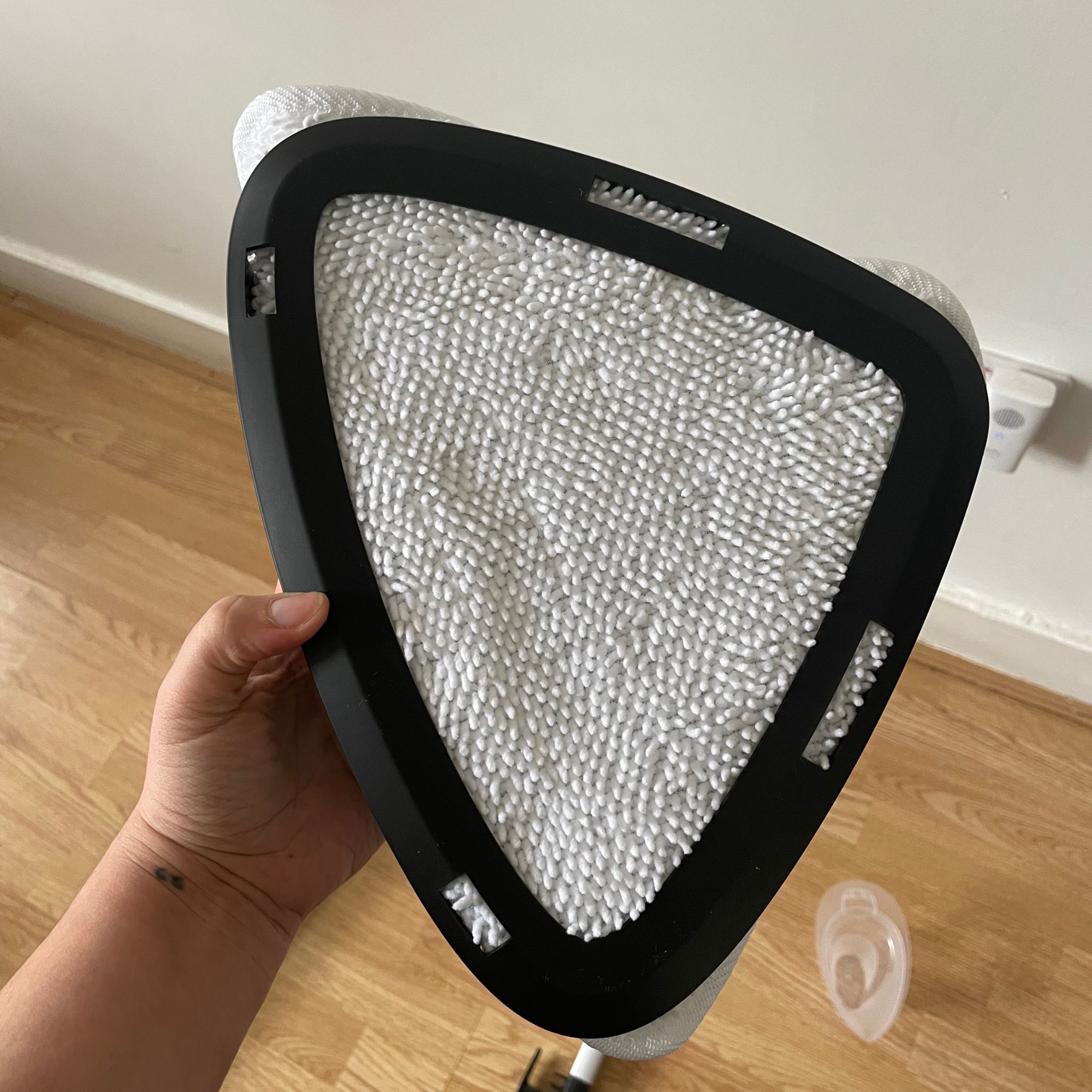
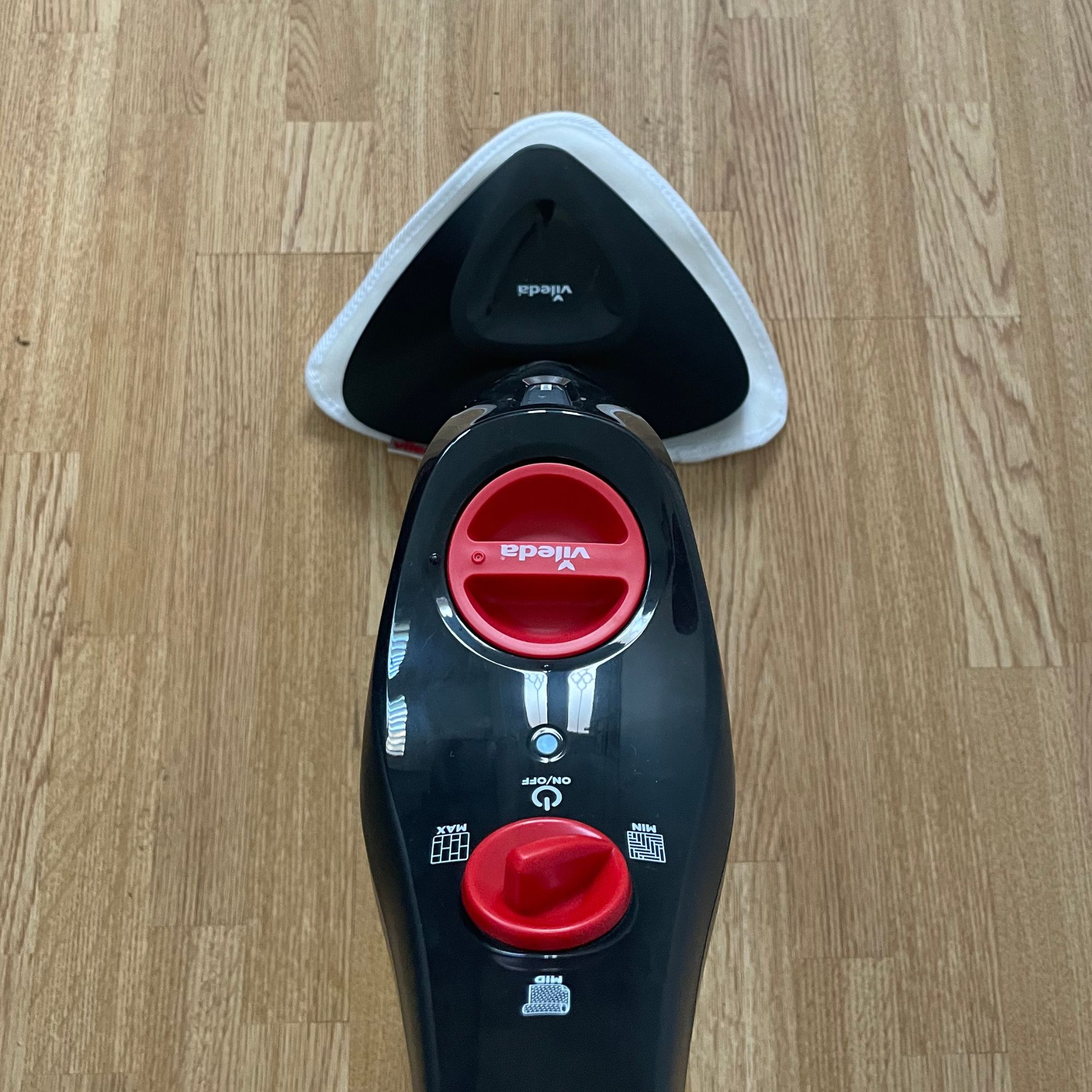
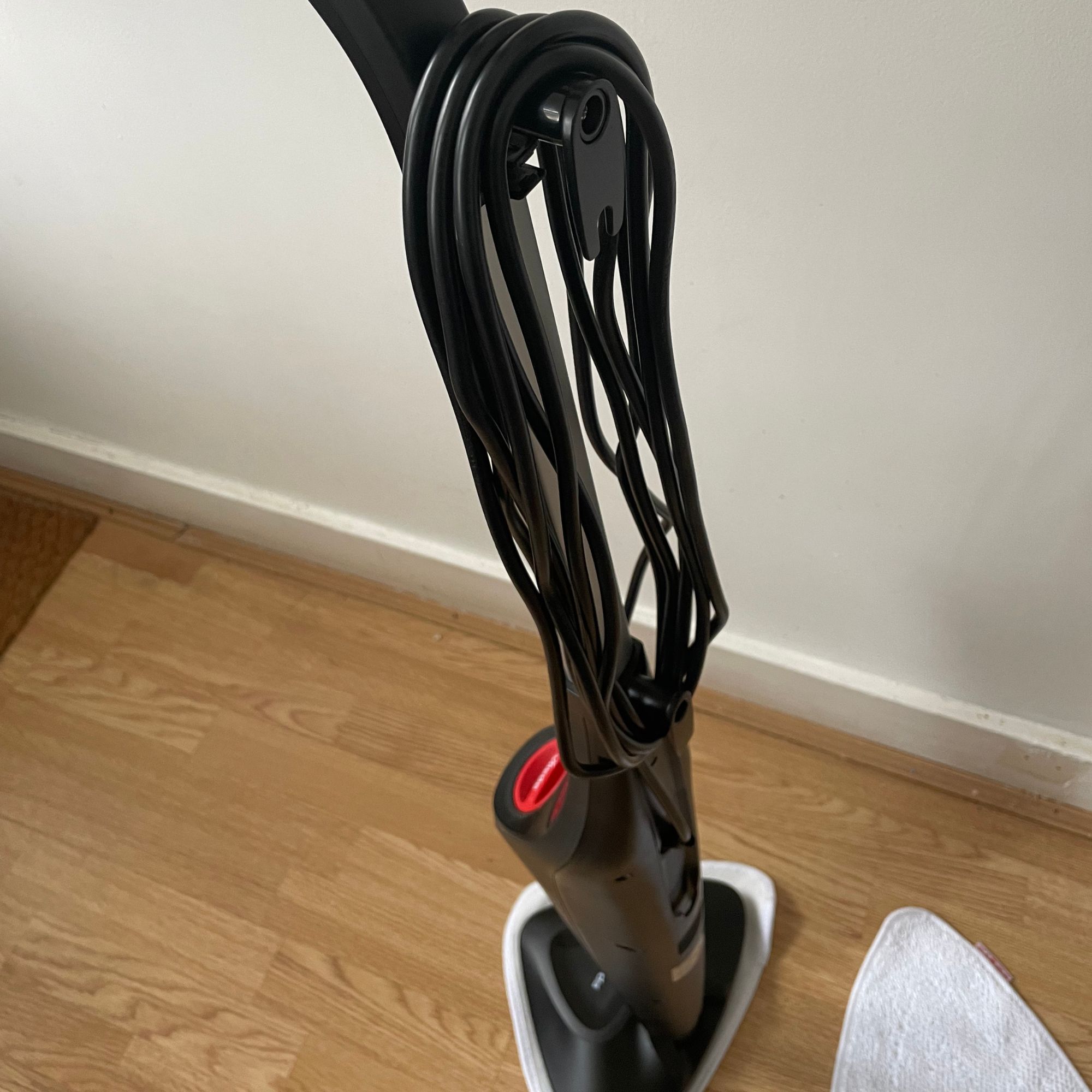

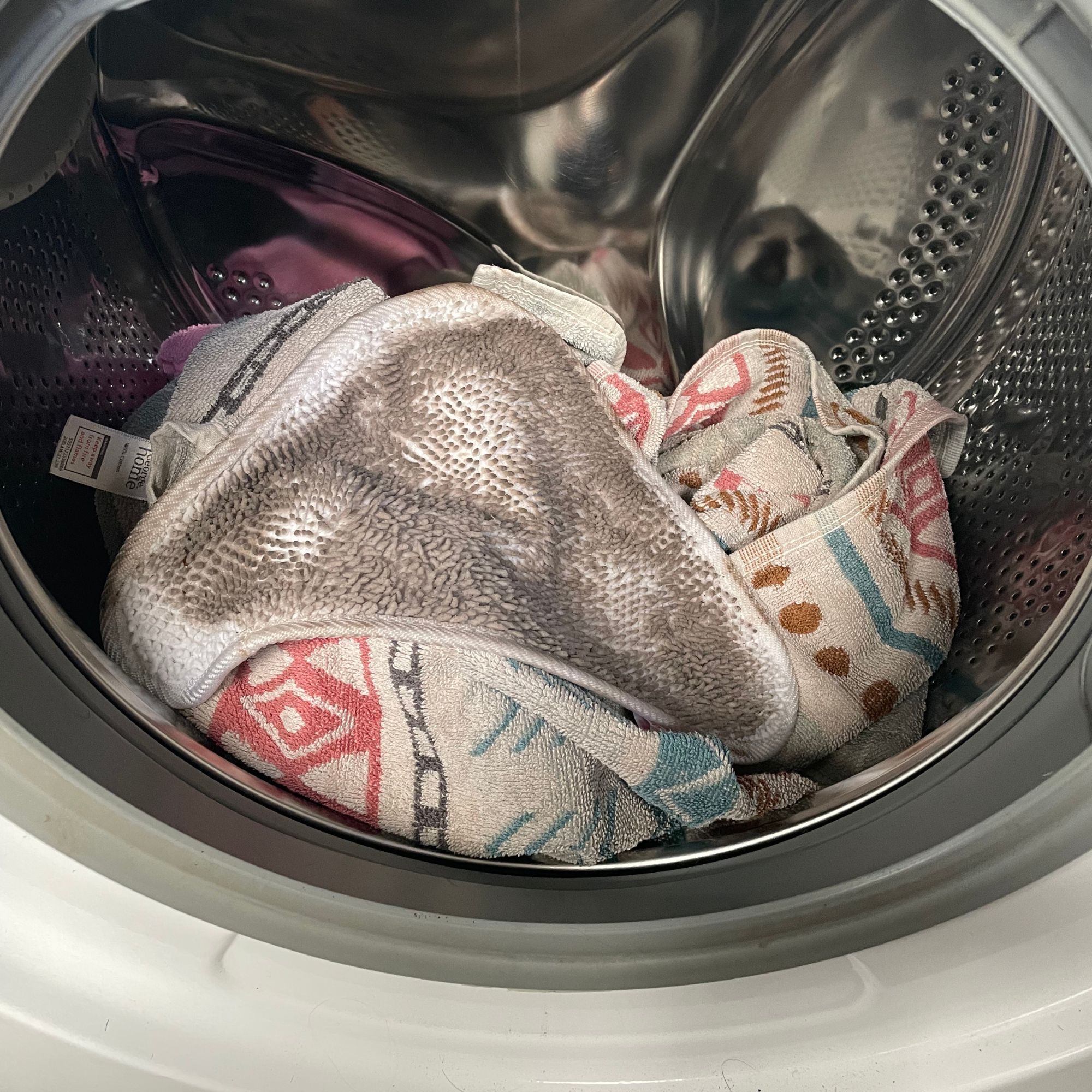

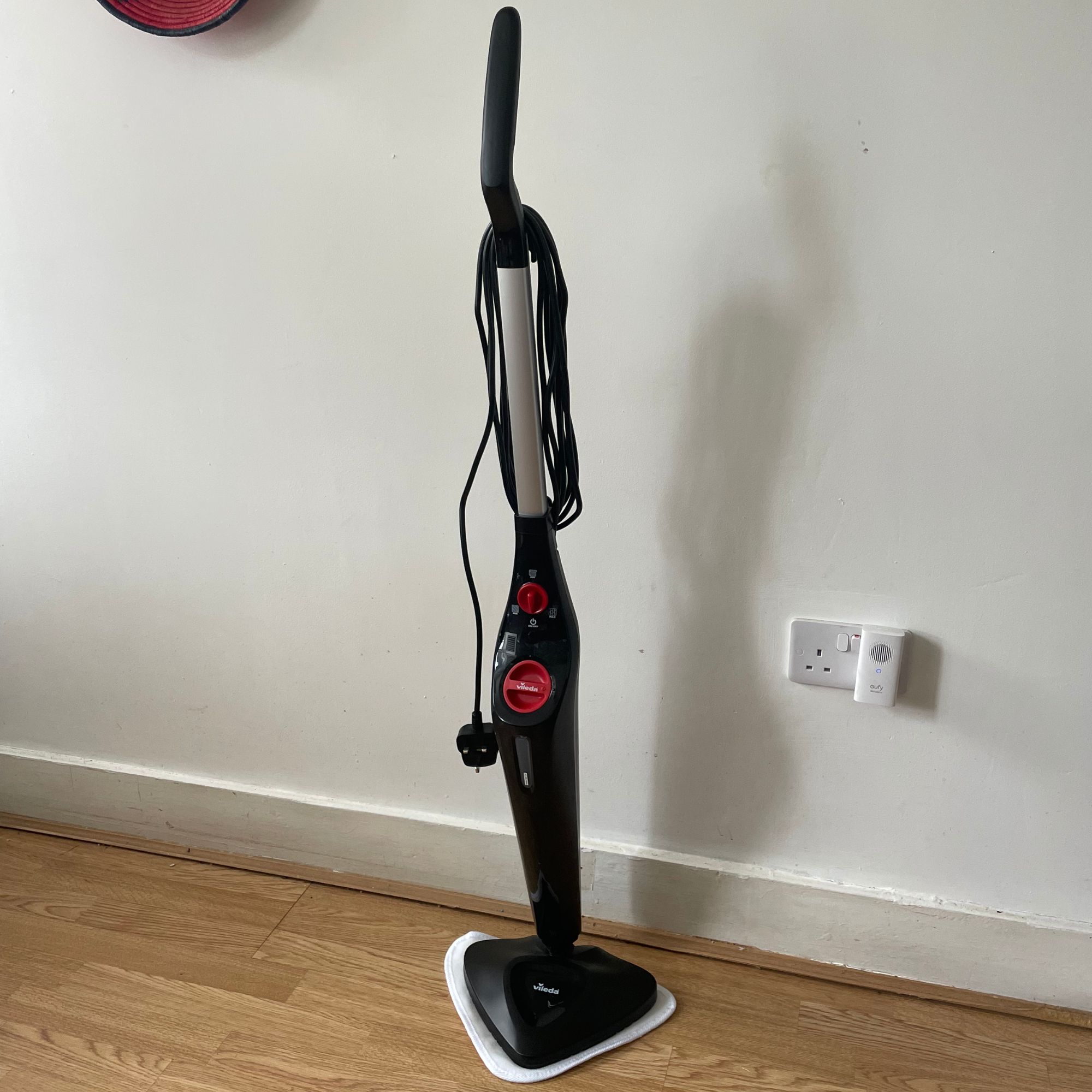

Specifications
Reasons to buy
Reasons to avoid
Competing with some of the best steam cleaners and mops out there, the Vileda Steam Mop Plus is the ideal floor cleaning solution. Offering a generous steam-cleaning time of 28 minutes, it's suitable for mopping all types of sealed floors - and even comes with a carpet glider to steam clean carpets.
Of course, the difference between this mop and any other on this list is that it is corded - so bear this in mind if you have a large home and limited plug sockets.
Features we loved during testing
I'm always shocked by the cleaning power of steam mops, but the Vileda Steam Mop Plus gave me the fright of my life when I looked at the mop head after cleaning. It was filthy, and proved just how much invisible dirt was lingering on my kitchen tiles, specifically.
It also offered a quick heat-up time, which meant that I could get cleaning almost as soon as I'd filled up the water tank and turned it on. Of course, you are limited by the cords with steam cleaners, but I did find that the 6m was more than enough in my home (which is on the smaller side).
Suitable for all sealed floors, this model is also a great all-rounder, even coming with a carpet glider to steam clean carpets. The spare mop pad meant that I could also continue cleaning even when the dirty one was in the washing machine.
Read our full Vileda Steam Mop Plus review for more details.
Best mops comparison at a glance
Model | Price | Ideal Home Rating | Brand Trustpilot Rating | Type |
£27.99 | 5 | 3.2 | Spin mop with microfibre head | |
£49.99 | 5 | 1.5 | Spin mop with microfibre head | |
£149 | 5 | 1.4 | Electric mop with microfibre head | |
£49.99 | 5 | 1.5 | Flat mop with microfibre head | |
£30 | 4.5 | 3.2 | Spin mop with microfibre head | |
£33 | 4.5 | 3.1 | Flat mop with microfibre head | |
£42 | 4.5 | 3.2 | Flat mop with microfibre head | |
£399 | 5 | 4.2 | Roller smart mop head | |
£74.99 | 4.5 | 1.5 | Steam mop |
Best of the rest
Lakeland Spray Mop with 2 Aluminium Bottles
Thanks to the aluminium bottles that come with this mop, you can use hot (well, warm) water to clean your floors, allowing for a deeper clean and the assurance that you're killing all the germs in your wake.
Our news writer, Kezia, loves this mop and even bought the mop to go with it. The butterfly head has a wide, absorbent sponge and a dirt-trapping microfibre pad, and you can wring it out to control the moisture levels.
Kärcher EWM 2 Electric Wipe Mop
While the Philips OneUp is my favourite electric mop, this Karcher model is a close second. It has a 20-minute run time and even comes with a stand for easy storage.
How we test mops
At Ideal Home, we take how we test products extremely seriously. We will never recommend a product in our buying guides that we don't have hands-on experience of ourselves, and so every mop in this guide was tested either by me or another Ideal Home-approved reviewer.
As we believe the only way to give our honest verdict on the best mops and to rank them accordingly is to test them in real-life scenarios, which is why every mop in this guide was tested in a real home - ideally on as many hard flooring types as we could (unless the mop is explicitly designed for one type of flooring).
We assessed everything from the mop assembly to the mop's overall performance, manoeuvrability, cleaning quality and value for money (including whether the mop heads are reusable or whether they need regular replacing). We also tested them multiple times to see how well the mop lives up to the manufacturer's claims and whether they're worth the money.









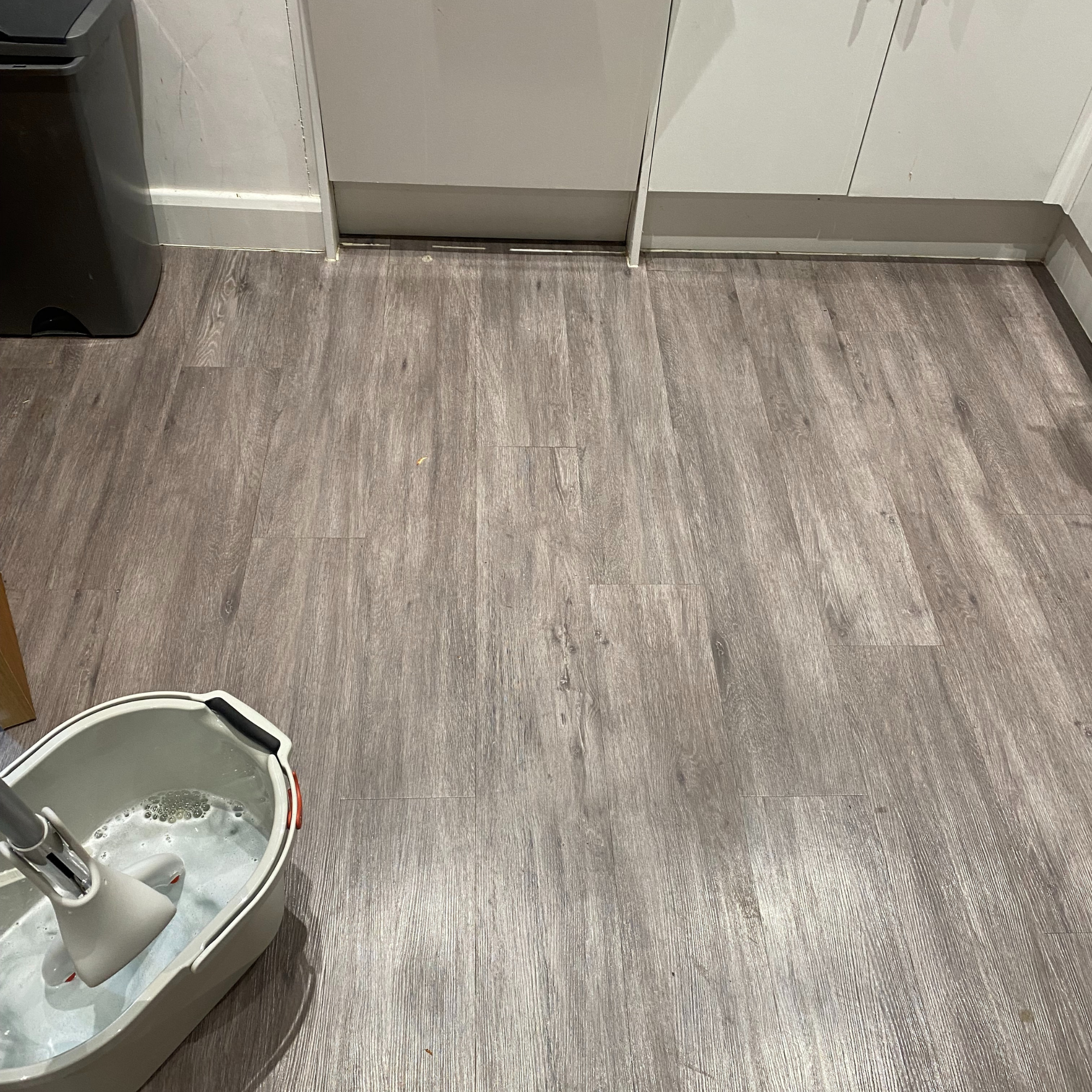

With all of the above at our disposal, we can then assign the mops a dedicated star rating. They are as follows:
5 stars - an exceptional mop that does exactly what you expect and cannot be faulted.
4.5 stars - any mop that leaves us wishing for a bit more will lose that crucial half-mark, but it's still classed as one of the best mops you can buy.
4 stars - an amazing mop that is worth your money but may need some fine-tuning before it suits everyone.
3 stars - a good mop that works well but doesn't blow us away. It may be hard to assemble, too expensive, or difficult to use.
2 stars - the mop lacks key features but is affordable, so it may suit someone if they're in a rut.
1 star - the mop does not work as intended, and we would advise you not to buy it.
How to choose a mop
There's a huge variety of different types of mop, but there are a few key characteristics that can turn this cleaning task into something you actually might find quite satisfying. Look out for these types of mop and you'll be able to mop every type of floor the right way:
Spray mops have an integrated water tank (kind of like a water bottle) and they work by pulling the trigger. This sprays water and solution onto your floor. These tend to be easy to manoeuvre and also convenient to store.
Flat mops are similar to that of a spray mop, just without a built-in water tank and trigger. You'll need to use one of these with a solution in a spray bottle unless your mop works with only water to kill bacteria.
Mop and buckets are the most popular type of mop. They do require you to lug around the bucket as you clean, though. A mop and bucket combo is great for deeper cleaning your floors – and getting into corners.
Sponge mops are brilliant for cleaning tiles. They are gentle on your floors, while you might want to be careful so as not to soak your floors with a sponge mop. They are also great for use on walls, too. You will probably have to use a sponge mop with a bucket.
Steam mops are generally corded and use the power of steam to both sanitise and deep-clean your floors. The high temperatures, coupled with the high power of the steam, are ideal for dirtier floors and tiles. However, they can only be used on sealed floors.
It's also important to think about the mop head material and how to clean a mop head. Sponge can be great at mopping up liquid spills with ease, while microfibre will make quick work of wet and muddy footprints. If you want chemical-free cleaning, then a steam mop could be right up your alley, providing you have compatible flooring.
FAQs
What are the cons of a spin mop?
The biggest downside of a spin mop is how much space it takes up, as most come as a mop and bucket set. This means that it can be hard to store for those who have limited storage space in their home.
Using a spin mop also requires you to add an extra step to your cleaning regime, as you have to spin the mop in the bucket to separate the dirt and water out of the microfibre head. As a result, it will probably take you longer to mop your floors.
However, the advantages of spin mops typically outweigh the negative, as these types of mops ensure that you're only ever using clean water to mop your floors.
Is steaming floors better than mopping?
When it comes to steam mopping vs regular mopping, they're actually two very different processes. We suggest you do both – not all of the time though. A mop is great for daily or weekly cleaning, and perfect for quick clean-ups whether from a messy dinner time or a spilt drink. A steam cleaner, or steam mop, however, is necessary for deeper cleaning.
This is because they use hot steam to sanitise your floors. It would be a smart idea to use a steam mop, like a or cleaner on your floors every month or so, with a normal floor mop being used twice a week – or more if need be.
How often should floors be mopped?
It probably goes without saying but brushing up and vacuuming high-traffic areas should be prioritised, while less trafficked areas can be mopped less often.
Nancy Emery, cleaning expert at Drench, adds, 'Kitchens, bathrooms and hallways are areas in the home that have the most traffic, meaning they’re also likely to get the most dirty.'
'As such, it’s best to regularly vacuum or sweep your floors every 3-4 days and then mop once a week. However, if you don’t clean correctly or with the right tools, you could be pushing built-up grime around your floors rather than removing it.'
Sign up to our newsletter for style inspiration, real homes, project and garden advice and shopping know-how

Lauren Bradbury has been the Content Editor for the House Manual section since January 2025 but worked with the team as a freelancer for a year and a half before that. She graduated with a Bachelor’s degree in English and Creative Writing from the University of Chichester in 2016. Then, she dipped her toe into the world of content writing, primarily focusing on home content. After years of agency work, she decided to take the plunge and become a full-time freelancer for online publications, including Real Homes and Ideal Home, before taking on this permanent role. Now, she spends her days searching for the best decluttering and cleaning hacks and creating handy how-to guides for homeowners and renters alike, as well as testing vacuums as part of her role as the Ideal Home Certified Expert in Training on Vacuums, having spent over 110 hours testing different vacuum models to date!
- Jenny McFarlaneSenior Digital Editor
- Annie CollyerDeputy Ecommerce Editor


